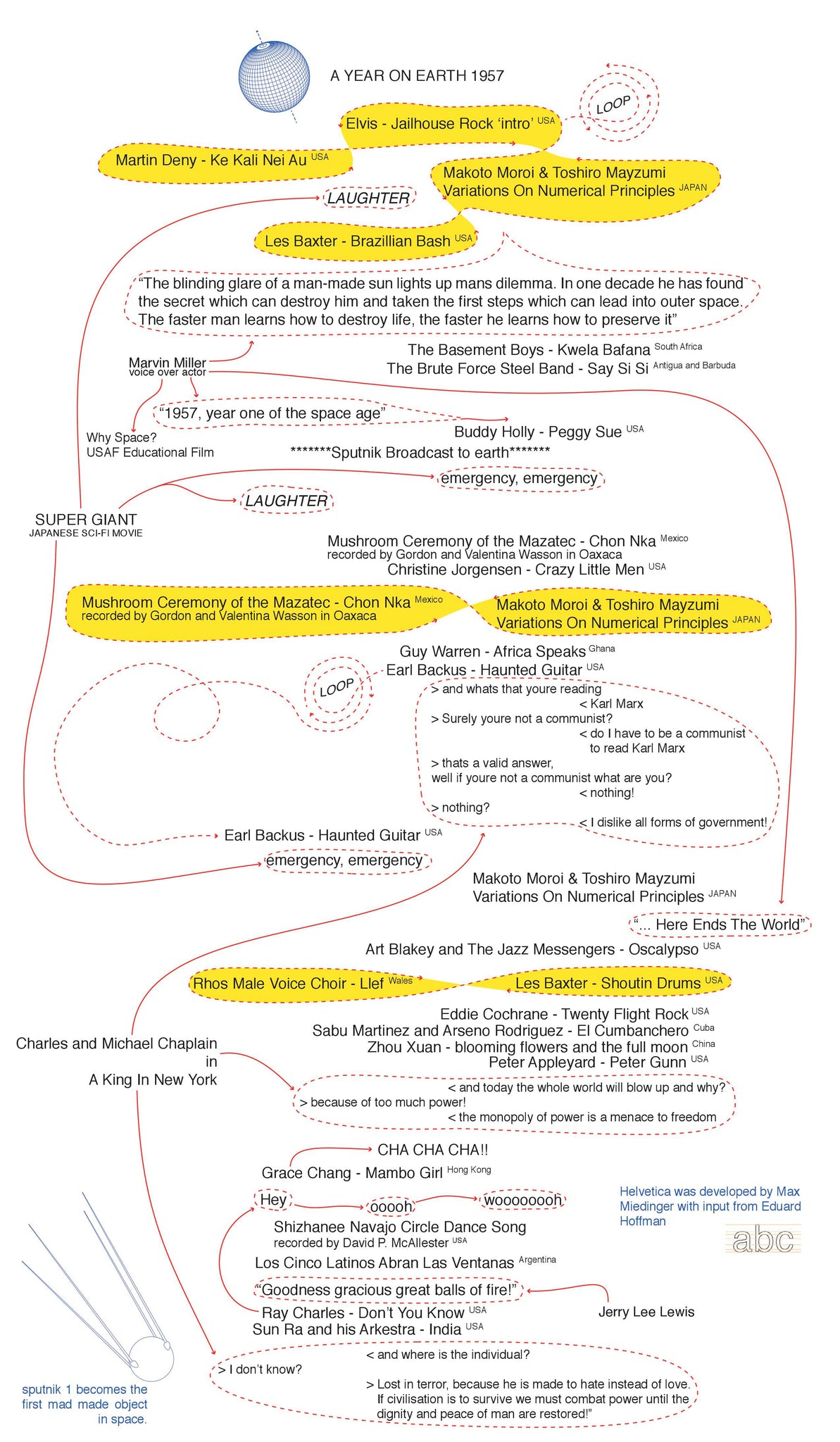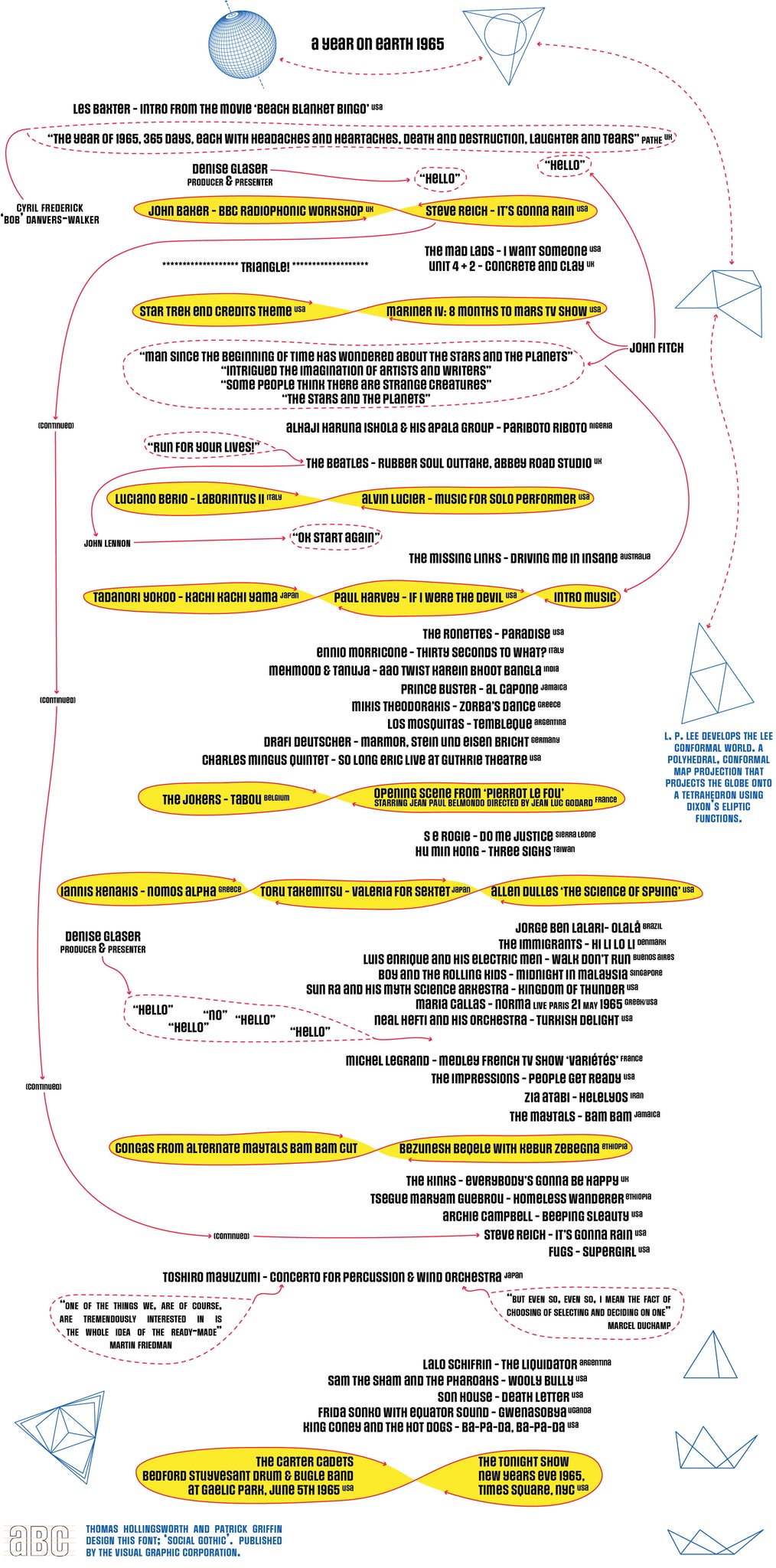Journal — Show and Tell
Show and Tell: 26
Recessed by Heidi Latsky and Maya Man
In celebration of our pop-up Cyber Garden at the Museum of Art Pudong in Shanghai, we are pleased to share the included digital project Recessed. Special Special’s Show and Tell series, which partly inspired Cyber Garden, becomes a virtual portal into our landing in Shanghai.
A collaboration between dancer/choreographer Heidi Latsky and artist Maya Man, Recessed stemmed from the collective isolation felt over the course of the pandemic in 2020. What does it mean to choreograph and perform digitally, at a time when the screen presents the only way to access another’s body? Instead of adapting an existing dance performance, the artists decided to create an interactive, intimate experience conceived especially for the browser.

Recessed by Heidi Latsky and Maya Man
You are invited to navigate from a grid of images and gifs on the landing page — whether a close-up of an intensely concentrating face, or the bounces of a dancer’s hair as they rise up in motion. Clicking on any of the images prompts a unique on-screen choreography, which consists of a series of smaller pop-up windows of various sizes and placement. Each appearing and disappearing in sequential order, these tiled windows depict dynamic bodies in domestic backdrops and in nature, presenting rhythmic movement from various angles in a deeply personal way, made possible by the digital screen.

Recessed by Heidi Latsky and Maya Man
Heidi Latsky founded Heidi Latsky Dance in 2001 and has been dedicated to an interdisciplinary practice that disrupts space, dismantles normality, and redefines beauty and virtuosity through performance and discourse. Recessed demonstrates the radical yet poetic power of unconventional viewpoints: set against a clear blue sky, dancer Jillian’s pregnant body forms a landscape whose contours move up and down with each breath; Donald, a performer with a disability, fully integrates his wheelchair and its spinning capabilities as a part of his cyborgian performance. The precision of programming and design injects the experience of space and time into the flatness of the browser. It satisfies not so much our voyeuristic tendencies, but a natural longing to be connected to other bodies, other perspectives, and other intimate realities.

Recessed by Heidi Latsky and Maya Man
In order to encourage visitors to see the work in person at Cyber Garden, the artists have created a video demo that previews the experience: https://vimeo.com/561366546
Featured dancers: Sabrina Bennette, Desmond Cadogan, Jillian Hollis, Donald Lee, Sora Sol. The artists plan to expand the project to include more dancers in the coming months.
Artist bios:
Heidi Latsky, who began her company Heidi Latsky Dance in 2001, continues to disrupt space, dismantle normal, and redefine beauty through education and performance.
Website: https://heidilatskydance.org
Instagram: @heidilatskydance
Maya Man is an artist, programmer, and dancer based in New York City whose work considers the computer screen a space for intimacy and performance.
Website: https://mayaontheinter.net/
Instagram: @mayaontheinternet
Show and Tell: 25
How to Feel More at Home by Francesco Imola

With many of us spending an inordinate amount of time at home, homemaking has become especially important. Beyond purchasing quirky LED lights and fluffy handmade cushions on Etsy to spice up our decor, we can have complicated feelings about the place we call home. While ideally home serves as a safe haven or sanctuary, it can also induce claustrophobia and the desire to escape.

How to Feel More at Home
In his browser-based project How to Feel More at Home, London-based artist and curator Francesco Imola captures fleeting, often contradictory thoughts, about domestic space. He presents ideas about the meaning of home and how we orient our bodies and minds—architecturally and temporally—to the space we inhabit in a scrollable text form. Vertical images that Imola took on his phone, such as of afternoon light flooding the corner of a room or a cat reclining in a garden, are revealed when the visitor clicks on random spots on the webpage, along with a geometric shape, color, or musical sound. Can comfort and shelter be housed by intimate moments, rather than a roof? Can home be contained within the warmth of a muted pastel color, a soothing chime of a bell, or an evocative word?
Imola began designing the website while living with his parents during quarantine. Undoubtedly, reflections on comfort and restlessness were magnified by the experience of isolation, precarity, and uncertainty. Yet, if all else becomes unanchored, we can still find stable ground and solace in somatic sensations—after all, as he writes, “home always starts with our body.” There is a clear physicality behind those photos, no matter how blurry and mysterious; the colorful shapes and sounds form a feedback loop in which the visual-sonic elements are activated by the user’s fingers and thereafter perceived by the physical self.

How to Feel More at Home
How to Feel More at Home is an example of “digital gardening”, a broadly applicable term that uses gardening metaphors to describe activities on the internet. Mark Berstein first coined the phrase in his 1998 essay “Hypertext Gardens”, conceptualizing the web as a sprawling garden of many paths. Later on, decluttering files was compared to weeding and pruning. In the last decade, various web practitioners framed the act of collecting, curating, and developing ideas in the public domain as “cultivating a garden”, as opposed to the model of “streams” (constantly renewed flow of information) found in Twitter and other social platforms.1 Some aspects of digital gardening are accomplished with code, but the core concept revolves around the accumulation of information and what to do with them. Imola first started developing the ideas around homemaking on Are.na, a version of digital gardening. For the artist, a custom and independent site offered the opportunity to further develop the concept, as well as incorporate JSON (JavaScript Object Notation) color libraries, opening up a visually and sonically stimulating path to intimate thoughts in his mind that otherwise might have gotten lost in the interwebs.
Enjoy the work:
https://francescoimola.github.io/htfmat/
Francesco Imola (he/they) is an artist, designer, and curator based in London working with software and code to explore the self in relation to public online spaces.
1. Examples taken from Maggie Appleton’s “A Brief History & Ethos of the Digital Garden”↩
Show and Tell: 24
Qing Ming: A Sculpture of Resilience by Huiyi Chen, Rui An, and Jiabao Li

Can we mourn digitally? Can virtual portals encourage communities to coalesce? Over a year into the COVID-19 pandemic and on the occasion of the Qingming Festival, one of the largest national holidays in many Asian countries, we would like to dedicate a space of remembrance to victims and families who have been affected. Each year on April 4th, Chinese families honor the dead by visiting the gravesites of their ancestors, performing cleansing rituals like tomb-sweeping and making special offerings. Co-created by artists Huiyi Chen, Rui An, and Jiabao Li in 2020, Qing Ming: A Sculpture of Resilience is an online monument that merges the impossibility of physically visiting graves and paying tributes to loved ones with the mechanics of 3D navigation.
[[read-more]]
Upon entering the portal, you are taken directly to the Hongshan Auditorium in Wuhan. It was here that the 4th session of the 12th National People’s Congress of Hubei Province took place, before the pandemic officially broke out in January of 2020. The simplified outlines of the street layout reside somewhere between the real architectural spaces of the city and the flowy contours of black and white dreamscapes. Some streets and buildings are named, while others are left blank and abstract, calling to mind the way Wuhan was perceived as a distant, vague place, especially by people abroad who only first heard about it as the center of a deadly epidemic.
Resembling a messy ball of digital yarn, the Sculpture of Resilience is the totality of each counterclockwise trajectory that a visitor has taken. You are prompted to join, enter a username, and become a part of a collective hive mind to remember the impact of this prolonged global health crisis. Literature about the public functions of monuments and memorials often distinguish the two by defining the former as that which celebrates victories and triumphant values, the latter as that which commemorates tragedy and loss. When official rhetoric in China was quick to embrace a celebratory stance over the government’s response to COVID-19, the creators of Qing Ming wanted to build a platform to remember the sadness and anger that people felt. While the project hones in on the solemnity of human loss, it also affirms visitors’ participation as a process of coming together. Solidarity in mourning is made evident by the overlapping trajectories of the thousands of people who have left their traces. As the Chinese proverb goes: While a single chopstick is easily broken, a bundle of chopsticks is not.
In an era where government and capital increasingly infringe upon public space, digital space has become an alternative for gathering and generating social discourse, and hence a realm where corporate entities contend for control and cultural capital. Google launched an interactive online monument using augmented reality to celebrate the legacy of the Stonewall Riots; on Weibo, the Chinese version of Twitter, the search results for certain trending topics is called “plaza”, referring to its public realm function; on Pokémon Go, anonymous users memorialized the life of 12 year old Tamir Rice, who was murdered by police at a gazebo in Cleveland, Ohio, by changing the description of the gazebo in the AR game. Where public service has failed, artists, grassroot movements, and corporations come in to fill the void.

Google Map Image of Hongshan Auditorium, Wuhan.
The creators of Qing Ming generated a 3D model based on data collected from the website, and uploaded it to mentions of Hongshan Auditorium on major online maps. This intervention collapses what we perceive to be the boundary between the physical and virtual, the officially-sanctioned and the community-driven. In a way, it constitutes what scholar James E. Young calls the “counter-monument”, which is defined as ephemeral, interactive, and provocative “memorial spaces conceived to challenge the very premises of their being”1 . In fact, the visitor’s counterclockwise movement is a self-conscious defiance of linear, territorial understandings of time, memory, and place.
As a staticky, melancholic soundtrack plays in the background, the project encourages users to think about the systemic problems exposed by the pandemic, while at the same time ritualizing the act of navigating and rotating around the digital sculpture, giving a new dimensionality to mourning and remembering. Just as in the process of rapid urbanization, families burning traditional Chinese Joss paper in front of skyscrapers is a paradoxical sight to behold, perhaps the temporary loss of traditional modes of mourning is in itself is a loss to be mourned.
1. [James E. Young, “The German Counter‐Monument,” Critical Inquiry, Vol. 18, No. 2. (Winter, 1992), pp. 271‐272, 272-274, 274‐278, 279, 294‐295.]↩
Enjoy the work: Qing Ming: A Sculpture of Resilience
About the creators:
Huiyi Chen
Huiyi is a Chinese-born, New York based artist and researcher working in performance, moving image, and interactive experience. She is fascinated by the relationship between individuals and power structures around them: how power structures are formed, how they shape individual beings and human resilience. Her current practices focus on investigating human agency at a time when feelings and desires could be quantified and algorithmically predicted.
Instagram: @cho.cho.choo
Rui An
Rui An has a background in computer graphics and artificial intelligence. He previously worked at TeamLab as an interactive designer/programmer and was the principle programmer in Critical Technology Studies Lab at National Center for Supercomputing Applications. He uses custom-made software as a medium to create interactions between speculative imaginations and possible realities.
Instagram: @61q0_future_sketches
Jiabao Li
Working at the intersection of emerging technology, art and design, Jiabao Li creates new ways for humans to perceive the world. Jiabao's TED Talk reveals how technology frames reality. Jiabao's work has been shown in Ars Electronica, SIGGRAPH, Anchorage Museum, OCAT Contemporary Art Terminal, Milan and Dubai Design Week, ISEA. She was awarded STARTS Prize, NEA, FastCoDesign, iF Design, Core77. Her work has been featured in Leonardo, TechCrunch, Bloomberg, Domus.
Instagram: @jia.bao.li
For Show and Tell, Special Special invites a selection of artists to produce or share work that can be viewed in the browser, downloaded, or streamed. The work is presented as a series of digital exhibitions periodically delivered to email inboxes.
Show and Tell: 23
Show and Tell

While many flocked to our first time (virtual) tabling at Printed Matter Art Book Fair, few got the full story about our site design. As we play out the last weeks of winter and keep dreaming about the end of our forced seclusion, we look back on our Show and Tell archives as a relic of the times we lived in. At risk of seeming ultra-meta, the Show and Tell for this month is...Show and Tell.
[[read-more]]

If you’ve ever wanted to experience the thrill of snooping on someone’s private messages, now is the time to do so. For PMVABF, we created a microsite to create the illusion that you had stumbled upon someone’s email inbox. Lucky for you, they subscribed to all of Special Special’s emails since the Show and Tell series began in 2016!
Presented in this specially-designed format, viewers could experience Show and Tell in the context it was always intended for. Since the beginning, the series was an experiment to reimagine the inbox as a place for exhibition and publication. Each project by an artist or designer was “exhibited” entirely within one email, which included its own graphic design, curatorial text, and bio.
Just like a real email, our PMVABF communal inbox was littered with cryptic messages throughout. There were some familiar senders such as Wen-You Cai, in addition to “spam” from the Lucky Lotto and the Weather Channel. Responding to Printed Matter’s virtual art book fair prompt, we recreated the email inbox as a personalized booth alongside hundreds of others.
As a throwback to one of our best Show and Tells, gather.town, and out of nostalgia for ’90s video games and mingling in close quarters, Special Special hosted a virtual house party that was only available to people who checked their emails at PMVABF. There were special appearances by artists that we have frequently collaborated with, like Maya Man, Britt Moseley, and Lu Zhang. Maya hosted a dance party while Lu led us through a chaotic karaoke. You had to have been there to soak in the energy that perhaps best embodied the time we currently live in.

Special Special hosts a virtual houseparty, 2021.
Feeling FOMO? If so, what are you waiting for? Check your inbox, and subscribe to Show and Tell!!
https://specialspecial.pmvabf.org
For Show and Tell, Special Special invites a selection of artists to produce or share work that can be viewed in the browser, downloaded, or streamed. The work is presented as a series of digital exhibitions periodically delivered to email inboxes.
Show and Tell
Introduction

Show and Tell is a series of digital exhibitions that are periodically distributed by e-mail to our newsletter subscribers. We started Show and Tell in March 2019 as a way of reimagining the inbox as both an exhibition and publication, and have subsequently expanded our platform to include WeChat as well. It is a channel to distribute works that were created specifically to exist in a digital environment, which allows the works to be experienced in any setting with internet access, rather than being confined to a physical gallery setting. The works range from browser-based projects to mobile apps to various downloadable file types. The constraint for each project is limited only by their ability to be circulated online.
With the over-saturation of online media, Show and Tell curates digital projects that stand out to us. In a constantly expanding network where the amount of information, materials, and means to create increases at an incredible rate, it is easy for things to get lost or forgotten—buried in endless feeds or neglected tabs left open. Show and Tell is a channel to distribute and resurface works that we think deserve appreciation in an environment that is both overwhelming and demanding of attention. Some digital projects we have shared have the effect of slowing us down, highlighting the way we interact with time and nature, whether a browser game that encourages the user to make drawings with organic elements such as lava, sand, and wind, or a mobile app that simulates the natural gradients of sun, clouds and sky during air travel. Others offer direct resources or forms of intervention in our engagement with current socio-political reality, such as programs and filters that maintain anonymity and protect protesters' identities when sharing images on social media.
As a growing collection that can be kept in your inbox to easily return to, Show and Tell offers a break on a utilitarian platform generally reserved for correspondence, showcasing projects that merely ask for attention and participation on your own terms.
We are continuing to add to this collection and share these projects straight to your inbox and WeChat. Just like the limited edition products we produce for physical exhibitions in our gallery space, each issue or digital exhibition is conceived as an edition. As our subscribers grow alongside our Show and Tell collection, the edition number is dependent on the number of receivers at any given moment. With the launch of the Special Special Journals page, we are archiving each issue of Show and Tell here.
Please feel free to send project submissions that relate to Show and Tell to showandtell@specialspecial.com. We would love to see what you are working on! And do subscribe to the Special Special newsletter to stay up to date and collect each issue!
Show and Tell: 22
Love Self by Missy Senteio

Do you ever wish that love could be as easy to wield as Cupid’s arrow? What if love could be yours to command and instantly win over its target? Love Self is a video game for Mac and Windows that takes this concept one step further: in order to love others, you also have to love yourself.
[[read-more]]

Love Self by Missy Senteio
Missy Senteio designed the game after reading feminist author, professor, and activist bell hooks’ book All About Love: New Visions. Taking inspiration from hooks’ illuminations of how American culture lacks positive outlooks on love, Missy programmed an environment where you can wander around and placate others using your heart. As your avatar wanders around a typical American suburb filled with lush greenery and single-family homes, there is no discernible objective and no option to commit violence. In this way, Love Self subverts what we expect from the first person shooter game.

Love Self by Missy Senteio
This Valentine’s Day, let’s practice love and ask ourselves, why limit love to romance? Why only direct love outwards? In Love Self, you can beam loving energy to anyone. If others successfully receive your love, they will reciprocate by following your journey. Their proximity to others will also improve the mood of others around them, increasing their vulnerability to receive love. Eventually, you can gain a mass following that roams together as one community. As Missy explains, “I wanted to make the act of extending love something that accrues value over time.” Love is an action that grows exponentially. Just be careful to not let your own heart meter run out; the game restarts if you love others but forget to love yourself and replenish your own energy.
In celebration of February as Black History Month, we honor Black creatives like Missy and remember the critical role that love plays in Black radical tradition. From Audre Lorde to Martin Luther King Jr., prominent Black figures understood that loving oneself in a world that did not love you was the foundation on which to enact change. Love Self honors that tradition by starting the game with a dialogue between the player and Aset, the Egyptian goddess of love and fertility. bell hooks said it best: “The ability to acknowledge blind spots can emerge only as we expand our concern about politics of domination and our capacity to care about the oppression and exploitation of others. A love ethic makes this expansion possible.”
Enjoy the work:
About the creator:
Missy Senteio is a storyteller. But oftentimes, she doesn’t use written words. Anything digital is her pen. And, if they're willing, others' eyes, ears, or hands become her paper. Missy is compelled to subvert “normal” things because she questions what's normal. And she thinks our realities are only as concrete as our egos. She has a lot of fun working with two friends on a local multiplayer game called Tuned Out. It's a chaotic competition framed by a TV, frenzied by channel surfing, and made boring with commercials.
Website: https://www.play-nyc.com/
For Show and Tell, Special Special invites a selection of artists to produce or share work that can be viewed in the browser, downloaded, or streamed. The work is presented as a series of digital exhibitions periodically delivered to email inboxes.
Show and Tell: 21
Earth Clock by Che-Wei Wang

As we come to the end of 2020 and greet the year 2021, we present to you our 21st Show and Tell! Join us in taking a look at the greatest asset that we still have: our time here on our dear planet Earth.
[[read-more]]
2020 has been an unprecedentedly difficult year that has challenged all of us in different ways. From the constant reckoning that we no longer can enjoy our previously normal routines to the anxieties of facing the outside world, these changes have presented us with a new set of perspectives to review our priorities. As a result, we continue to reflect on the values that we can provide to our community for years to come. As a platform for creative dialogue, we had to reconsider how to keep our spirits alive through social isolation this year. Our two exhibitions, Artists’ Tools and Late Summer, actively demonstrated a need for artistic ingenuity in our daily practices, and a deep connection to nature to grow healthy roots for physical and spiritual well being. We also organized workshops and performances, our Frontiers Conference event series, and Show and Tell, in digital or socially-distanced formats. We hope this nurturing community spirit will carry through in our ongoing dialogues and collaborations in the coming years, as we help each other grow in healthier and ever more creative directions.

Che-Wei Wang paints Special Special using the Dot Blaster 8000.
Before we stumble into the new year, we present our 21st Show and Tell with Earth Clock by Che-Wei Wang, one of the artists featured in our Artists’ Tools exhibition and who branded our storefront gate with colorful waves.

Che-Wei Wang, Earth Clock.
Let us first zoom out of the confines of our headspace, or the physical home that we have been quarantined in for so long, and see things from a different perspective. Every minute, it collects images from Google Earth and assembles a five-panel digital clock from aerial views of the Earth that resemble Arabic numerals.
Whether it is a rocky valley in Peru that resembles the number “1”, two domed rooftops in England that are arranged like a colon, or an artificial island in Bahrain that reads as a cursive number “3”, visitors who engage the clock can journey to different corners of the Earth. Users are also encouraged to discover for themselves places from Google Earth that resemble numbers, and contribute to the collection of “earth clock” data.
Alternating between artificiality and chance, it plays with our sense of scale and time—both of which have been undeniably transformed by the pandemic—distorting, elongating, condensing.
For some of us, the process of being transported via digital screens is as close to traveling as we can get at the moment. With Earth Clock, each increment in time, a different configuration of aerial landscapes is born. Time pulsates; it becomes non-linear. At a time when our sense of security, safety, and community is continually challenged, it is a reminder that the only constant is movement.
We encourage you to use Earth Clock for the countdown this year, and on that occasion, the Special Special team wishes you a very Special New Year!

Che-Wei Wang's Earth Clock displays the time 12:31.
Enjoy the work:
About the artist:
Che-Wei Wang [pron. sey-wey] is an artist, designer & architect with expertise in computational and generative design, fabrication technologies, electronics, CNC machining, and metal manufacturing. The results range from architecture & sculpture to interactive installations & mobile apps. He is the winner of the 2003 SOM fellowship and the Young Alumni Achievement Award from Pratt Institute. Che-Wei has taught courses on design, time, creative computing, and inflatables, at various institutions. He is an alumnus of MIT Media Lab, ITP at NYU, and Pratt Institute.
Website: cwandt.com
Instagram: @charliewhiskeytango
For Show and Tell, Special Special invites a selection of artists to produce or share work that can be viewed in the browser, downloaded, or streamed. The work is presented as a series of digital exhibitions periodically delivered to email inboxes.
Sign-up to receive Show and Tell Newsletters
Show and Tell: 20
2020 Holiday Edition
Throwback, Slow Down, Move Around

This holiday season provides a much-needed opportunity to slow down, reconnect with ourselves and our loved ones, and even acquire some new vocabulary to express feelings that may have been overlooked. 2020 has been an overwhelming and stressful time for all of us. In lieu of acceleration and distraction, which is often associated with digital technology, we selected three digital projects that respectively enhance mindfulness with our smart devices, offer an alternative mode of gathering, and enrich interpersonal connections by throwing back to simpler times.
[[read-more]]

Incense Timer by Olly Bromham
(1) Incense Timer, made by Olly Bromham, is a tool to measure abstractly the passing of time. Mimicking a single burning incense on your screen, it suggests a calmer and more finite interaction with both our devices and ourselves. The user can set an allotted time via the length of the incense, activate it, and use the time it takes to burn to gradually reach a trance. Give Incense Timer a try. Use it to alleviate anxiety before hopping on a crowded virtual call in another window.

Screenshot of Special Special on Gather
(2) Speaking of virtual calls, Gather is a video-calling website that simulates the spatial experience of how social interactions take place in real space. Combining a standard grid interface with a bird’s eye view of a lo-fi game, it allows participants to explore their setting as tiny avatars, while having separate conversations in parallel. Users can choose between many pre-existing settings to set up their room: a beer garden - if you long for fresh air mixed with loud conviviality and sand pits, a moon pond - if you are feeling otherworldly, and even Times Square - if you want to take in all the tourist traps and commotion without subjecting your body to them.
As you move around on these two-dimensional maps, the webcam video and microphone audio from the other people in the room fade based on your distance to them. This spatial movement allows you to hop in and out of conversations. Perhaps, during a virtual family brunch, you want to move away from a relative who talks too much. Gather provides a nuanced option for connecting with friends and loved ones. The game offers a way to reduce our collective Zoom fatigue.

Screenshot of GifCities
(3) During this celebratory season, we also anticipate many digital exchanges, whether over text message or email. To upgrade our vocabulary and limited emoji library, we suggest GifCities’s extensive collection of animated Gifs as a supplement.
GifCities: The GeoCities Animated Gif Search Engine was a special project of the Internet Archive and the Wayback Machine. The team mined GeoCities, an early web hosting service that operated between 1994 and 2009, and extracted over 4,500,000 animated GIFs to build a distinctive search engine. You can type in keywords to return a list of results, most of which will defy your expectations. Furthermore, each GIF links back to the GeoCities page on which it was originally embedded, reflecting the DIY, sometimes messy and decentralized, aesthetics of an internet era, where users created their custom websites and connected via common interests.
From spinning Word Art aesthetics, glitchy cartoons, to Bush-era ad campaigns, there is nothing quite like a blast from the past. Special Special encourages you to browse the collection, recklessly indulge in nostalgia, and incorporate them into your everyday visual language.





Enjoy the work:
(1) Incense Timer
(2) Gather
(3) GifCities
About the creators:
Olly Bromham is a designer and programmer asking questions of his surroundings both online and offline, responding by building websites, tools and objects. He’s currently interested in examining the relationship between natural and technological existences, measuring time, and soundtracking daily life.
The Internet Archive GifCities project team consists of Vinay Goel (Senior Data Engineer), Jefferson Bailey (Director, Web Archiving), and Richard Caceres (Senior Software Engineer). GifCities is part of Archive Lab.
Gather is built by a team of friends and engineers, who are interested in creating virtual spaces for people to live and interact more effectively online.
For Show and Tell, Special Special invites a selection of artists to produce or share work that can be viewed in the browser, downloaded, or streamed. The work is presented as a series of digital exhibitions periodically delivered to email inboxes.
Show and Tell: 19
F Trump

As the 2020 election night looms close, Special Special presents F Trump, a highly handy Chrome Extension made by Chino Kim in 2017. Whenever you hover your cursor over any appearances of the word “Trump”, the extension replaces your mouse cursor with a middle finger. The purposely obscene gesture is a playful manipulation of the default black-and-white, cartoonish open hand cursor, which is used to denote any live link on the web page. F Trump replaces the complacent pointer finger with the more pointedly disparaging middle finger, bringing about a cathartic release for the user.
[[read-more]]

Kim created F Trump as a part of “100 days of internet interventions”, a series of digital tools that interfere with the user’s everyday web browsing experience. Short, whimsical, and targeted, these extensions act on the Chrome browser, weighing the browser down with each open tab, or turning the browser into an eye that stares at you and blinks periodically.
Although it might be tempting to define them as simply anti-productivity apps, they also defamiliarize habits we have developed in the digital everyday and at the same time highlight the invisible power structure behind this most commonly-used piece of software. At the same time, these daily interventions are also like intimate journal entries, in that they capture momentous events in history in a mischievous way, such as an extension that programs all the avatars in your facebook timeline to “leave their posts” and “march on” to Washington.

“100 days of internet interventions” can be found on Kim’s Tumblr page. Special Special encourages you to download F Trump, and let it do the work for you.
For Show and Tell, Special Special invites a selection of artists to produce or share work that can be viewed in the browser, downloaded, or streamed. The work is presented as a series of digital exhibitions periodically delivered to email inboxes.
Show and Tell: 18
Typatone

Typatone (2015) is a text editor that makes music out of your writing by corresponding each letter or character to a musical note. With Typatone, you can write and send a message and hear it as music. Try writing out the name of your lover or something you’re scared to say out loud. A copy-pasted text from Wikipedia can become an ambient backdrop.
[[read-more]]
This collaboration between creators Lullatone and Jono Brandel and was born out of a wish to create a more functional follow up to their popular project Patatap.
The methodology of assigning music notes to letters of the English alphabet was based on a study by Cornell from 2003-2004 that analyzed the frequency of letters used when writing in English, based on a sample of 40,000 words. Typatone matches the most frequently used letters to more melodic notes of a lower pitch, and less frequently used letters to a higher pitch, giving more flavor to the composition.

Typatone has six filters to create melodies in a range of ambient moods, and you can keep several tabs of music playing open at once, layering the tunes. Write someone a message, or if you are curious to peep into the lives of others using Typatone, you can see past messages sent here.
Here is our Special message for you:
https://typatone.com/m/G3vNBgwvM8
Enjoy the work:
Typatone
About:
Jonathan (Jono) Brandel is an award-winning graphic designer and computer programmer. He comes from mixed heritage, an American of Filipino and Polish descent. As such, Jono pairs distinct subjects to frame the creative process. These combinations range from latin and emojis to lithography and pixel sorting. While pairings vary, there is an accessible tenor to the digital and physical objects he produces. This attention to detail allows people to access complex subject matters including positivism, the collision of black holes, and music composition, with ease.
Website: jono.fyi
Instagram: @jonofyi
Are.na: jono-brandel
Lullatone is Shawn and Yoshimi, a musical duo based in Nagoya, Japan. Built on a bed of indie film instrumentation and close mic'd coziness, Lullatone's albums hint at the whimsical cinema. Flourishes of glockenspiel, intimate plucks of guitalele (a Japanese inventive cross between a guitar and ukulele), hushed strings, piano and brushed drums are all used in illustrative and imaginative ways. But, despite the intricate instrumentation, the tracks never feel cluttered or lose their clarity. These are carefully considered compositions. Airy and gentle, they owe their understated quality to Lullatone's life in Japan, where subtlety and good taste are a key to life. The entire album was recorded in the group's meticulously organized studio which has been featured on Lifehacker and Apartment Therapy for its design conscious take on simplicity in life design. Like their studio, their albums show a modern take on minimalism, one filled warmth and intimacy, and proves that sometimes a lack of clutter is all that is needed to inspire the imagination.
Website: lullatone.com
Instagram: @lullatone
Spotify: Lullatone
For Show and Tell, Special Special invites a selection of artists to produce or share work that can be viewed in the browser, downloaded, or streamed. The work is presented as a series of digital exhibitions periodically delivered to email inboxes.
Show and Tell: 17
The Online Museum of Multiplayer Art

As COVID came and pacified our movements, LIKELIKE, a space for independent games and playable art located in Pittsburg, found it natural to take their space online. Unlike many other art spaces that have done the same, LIKELIKE found their digital space to be more suited to presenting their works than their physical location. The browser-based games that the space specializes in lend themselves to be experienced individually in private spaces.
[[read-more]]

LIKELIKE Online quickly expanded to include the online Museum of Multiplayer Art (oMoMA), a wing that combines the social nature of visiting an art space in person with the intimacy of experiencing the works from home on your own terms. At the oMoMA, you choose an avatar and step into several multiplayer rooms that subvert the nature of language and engage the user in play.
In the Family Room, you roleplay as a distressed housewife, as you step into a white picket fence home with pictures of you and the family at Disneyworld. In the VIP Room, your speech slurs as you down caviar tartines and gaze over a nighttime cityscape. You can also enter the Mirror Room, where your reflection gazes back at you and your words are thrown back in your face.

With the chat function, you can speak to others you run into, emulating early internet chat rooms where anonymity lends itself to expression. The awkwardness and pressure of socializing and networking at IRL gallery openings are stripped away in this whimsical space where everyone remains anonymous.
Step into LIKELIKE Online and turn right to enter the online Museum of Multiplayer Art. The museum is best experienced with others, so we encourage you to set a time to meet there with a friend or simply go by yourself and make new ones.
Enjoy the work:
The Online Museum of Multiplayer Art
About:
LIKELIKE is
A space for independent games and playable arts
A strictly non-commercial, artist-run endeavor
An attempt to reimagine the social dynamics of the arcade without nostalgia and commodification of play
A venue for projects that don’t sit comfortably in traditional art contexts and game industry events
A node in a growing network of spaces and events promoting an alternative, experimental game culture
A 20’x23’x12’ room in the Garfield neighborhood of Pittsburgh, PA
A space committed to be inclusive and harassment-free
LIKELIKE is made possible in part by the Frank–Ratchye STUDIO for Creative Inquiry
LIKELIKE is
Paolo Pedercini – Executive Director
Tenley Schmida – Reluctant Director
Heather Kelley – Sensory Director
Website: LIKELIKE
Twitter: LIKELIKE
For Show and Tell, Special Special invites a selection of artists to produce or share work that can be viewed in the browser, downloaded, or streamed. The work is presented as a series of digital exhibitions periodically delivered to email inboxes.
Show and Tell: 16
My Hand on Yours by Coco Yuan

As we reacquaint ourselves with touch and closeness after months of social distancing, use Coco Yuan’s work My Hand on Yours to ease into the process.
My Hand on Yours is a browser-based work where you can place Yuan’s virtual hand on top of yours. Her hand can hold your hand or rest gently on it, reminiscent of interactions we took for granted pre-COVID.
The user uploads a picture and can then position the overlaid virtual hand in various ways, such as bending the knuckles, extending a pinky, clenching a fist.
[[read-more]]
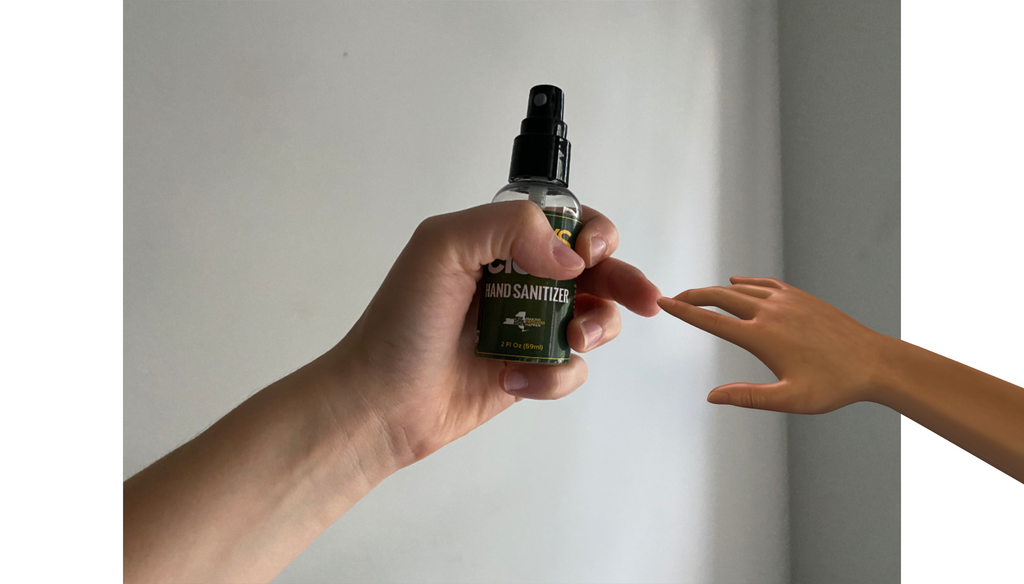
The project stems from a time before social distancing, when Yuan, who is based in Melbourne, noticed that a lack of well-planned public space in Melbourne resulted in people claiming streets, cars, and parking lots as social spaces. By approaching strangers in these spaces, asking if she could join them and subtly touching their hands, Yuan became part of their sacred personal sphere.
My Hand on Yours is an effort to transfer this same intimacy of proximity and touch to the digital realm. The pictures created using My Hand on Yours can be uploaded to a gallery on the project website. They are often humorous: one user manipulates Yuan’s hand to join them in petting a peculiar dog, another has the hand doing dishes with them.
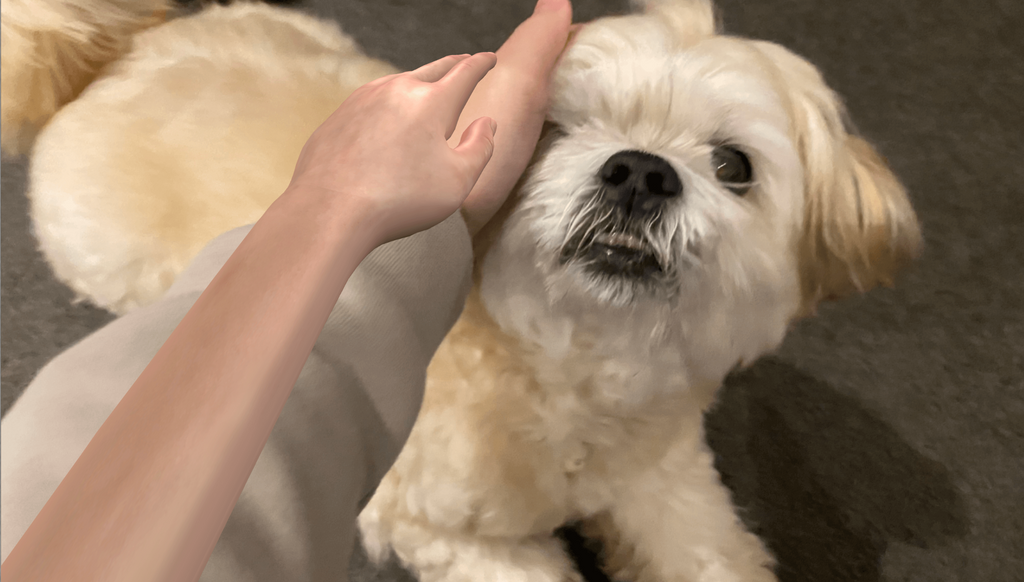
The project description is not apocalyptic nor pessimistic about the possibilities of holding hands IRL once again. Yet seeing the artificial hand in these familiar settings contributed by users can feel strangely sad and touching. The gentle touch of the digital hand is little substitute for the warmth of a real hand, but it also makes one think about how nice it would be to always have a hand available to hold through lonely or isolating times.
Enjoy the work:
My Hand on Yours
@my_hand_on_yours
Coco Yuan is a graphic designer from Melbourne, Australia.
Website: coco-yuan.com
Coco on Instagram: @sy_c0c0
For Show and Tell, Special Special invites a selection of artists to produce or share work that can be viewed in the browser, downloaded, or streamed. The work is presented as a series of digital exhibitions periodically delivered to email inboxes.
Show and Tell: 15
Mother’s Tongue Phantom Banquet

How can we access memories both shaped and obscured by immigration and cultural assimilation—something vaguely defined as the diaspora experience? What role does language and material heritage play in constructing often conflicting feelings of hope and anxiety, fear and belonging?
[[read-more]]
To Lap-See Lam, a second generation Swedish-Cantonese artist, Chinese restaurants are undoubtedly imbued with a general richness of meaning and stereotyping. Mother’s Tongue (2018) and Phantom Banquet (2019-2020) form part of an ongoing series of work that negotiates layered immigrant experience in Sweden, weaving together the personal and the mythical.
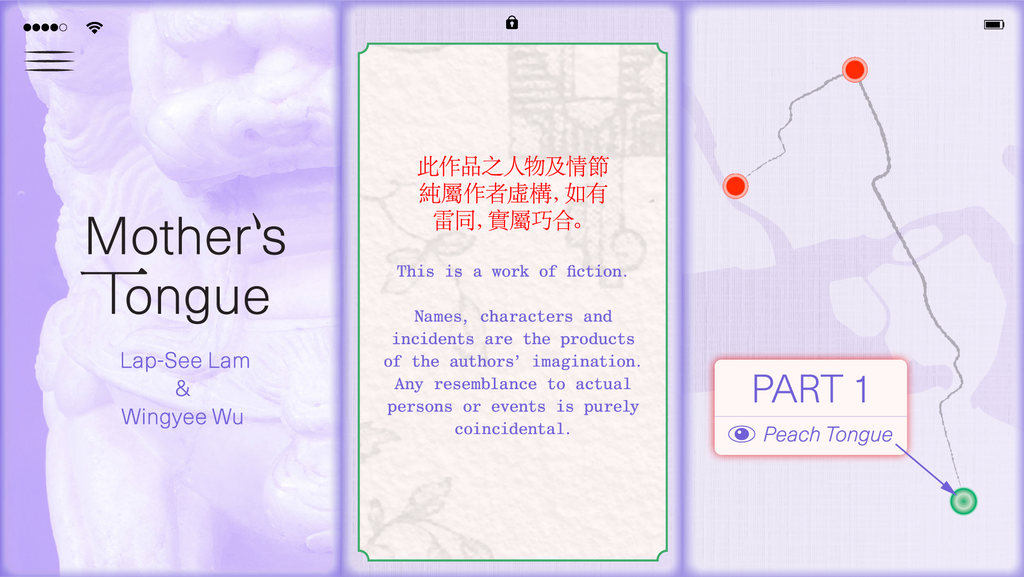 Courtesy of the artists and Galerie Nordenhake (Stockholm)
Courtesy of the artists and Galerie Nordenhake (Stockholm)
Produced in collaboration with filmmaker Wing-Yee Wu, Mother’s Tongue was originally designed as a mobile phone app. Using 3D laser scanning, it documents and preserves the interior of several Chinese restaurants in Stockholm at a time when many of them are about to be taken off the map, and turns to fictional, even fantastical, narratives to craft a speculative trajectory. The mobile app unfolds over three restaurant locations—Peach Tongue, Miss China, and Cyborg World—and encourages you to physically visit these sites that are no longer there.
Acting as voice overs, ghosts or spirits with AI voices speak from the years 1978, 2018, and 2058, respectively, as they bear witness to three generations of immigrants who have passed through these locales, showcasing moments of tenderness, displacement, and cultural clashes against sweeping changes in technology and the global landscape. In an intimate and revealing scene, we hear a mother diagnose her daughter’s swollen tongue as a psychosomatic symptom, invoking the saying “a tongue has a special relationship to the heart”.
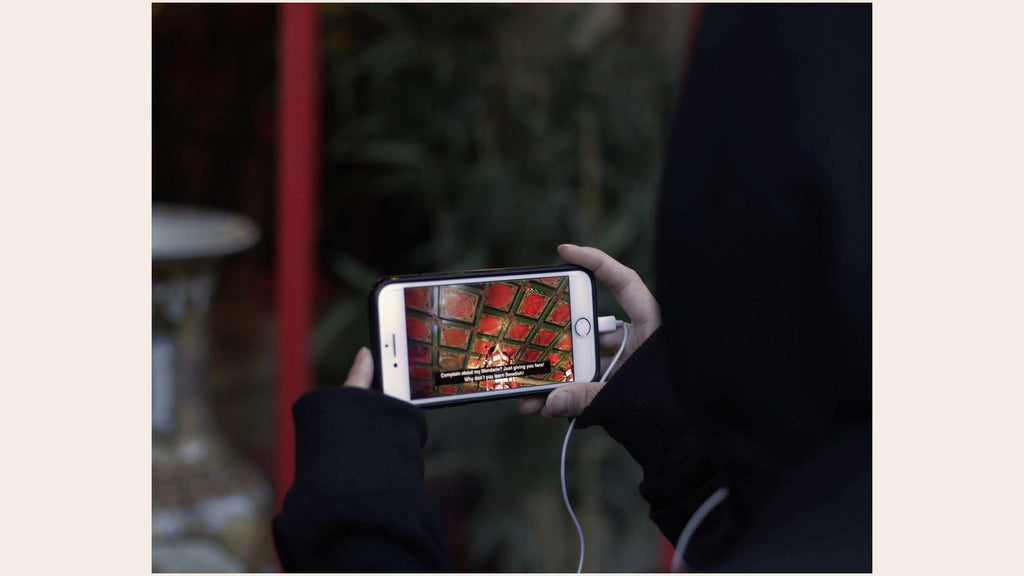 Photo: Anna Drvnik/ Mossutställningar
Photo: Anna Drvnik/ MossutställningarLarge ornamental vases, faded colors, and archival photographs inhabit this ghostly world bedecked with lavish furnishings. Mother's Tongue takes the viewer on a journey that is reminiscent of an archeological dig from the future or an undersea shipwreck, providing a distanced lens to look at prevailing tropes of techno-orientalism and otherness.
Historically, Chinese restaurants have long existed as an exotic other in the Western imagination of those seeking alternative dining experiences; more recently, East Asian businesses are often seen as the quickest to embrace robots and artificial intelligence in replacing manual labor forces. However, between the cracks in the jagged polygons of the 3D scans, the multiple dimensions and complexity of lived lives shine through.
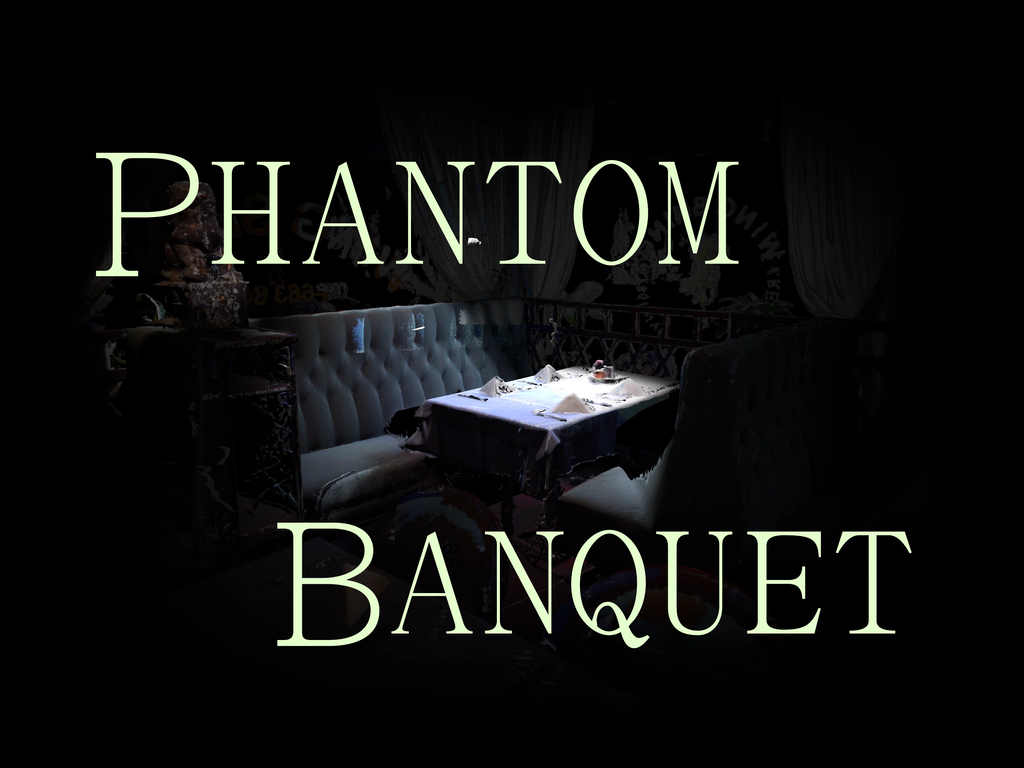 Courtesy of the artists and Galerie Nordenhake (Stockholm)
Courtesy of the artists and Galerie Nordenhake (Stockholm)Continuing the thematic exploration of diaspora identity in Mother’s Tongue, Phantom Banquet picks up where the previous work left off. Originally produced as a Performa 19 Commission in the form of a multimedia installation and performance piece, it was presented as a 360-degree video at Lap-See Lam’s solo exhibition at Galerie Nordenhake Stockholm.
Following the young protagonist at its center, we are transported through portal after portal, through an extravagant restaurant interior, to an eerie space-time void, then back to the narration of a timeless tale. Through a retelling of the folkloric tradition of ghostly visitations, with the added visual dimension of VR and animation, the work engages with ritualistic summoning, familial legacies, and the circularity of time. Who, really, sits at the banquet table?
Special Special encourages you to delve into this expansive, multimedia universe, and maybe even find Easter eggs along the way.
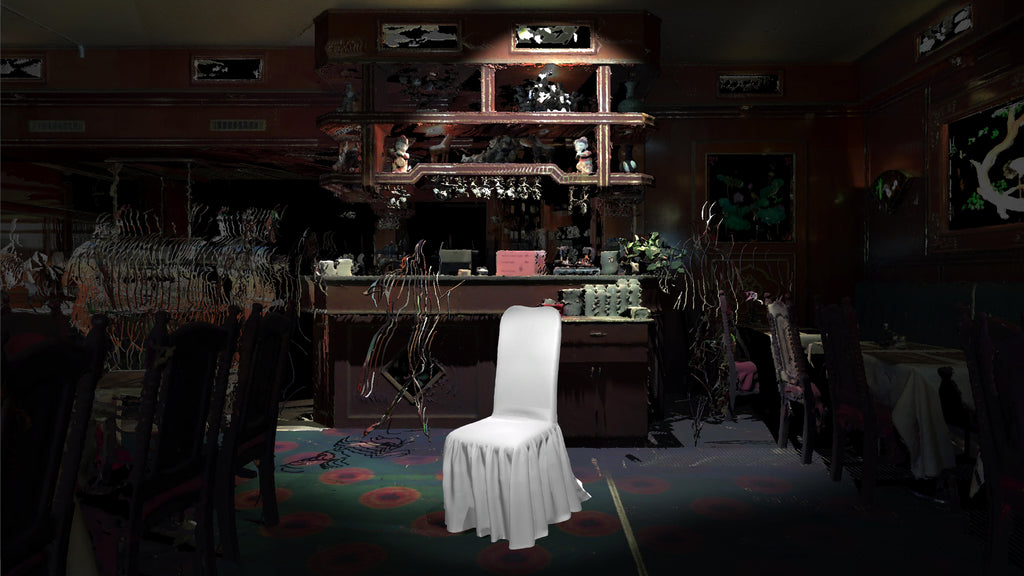 Courtesy of the artists and Galerie Nordenhake (Stockholm)
Courtesy of the artists and Galerie Nordenhake (Stockholm)Download Mother's Tongue for Apple iOS or Android
Experience Phantom Banquet at home with your smartphone here. Headphones are recommended. You can order an inexpensive flatpack headset for your smartphone online or make your own.
Lap-See Lam was born 1990 in Stockholm. She has a major upcoming solo exhibition at Bonniers Konsthall opening in January 2022. Solo exhibitions include Galerie Nordenhake, Stockholm (2020); Skellefteå Konsthall, Skellefteå (2019); Moderna Museet Malmö (2018–2019); and Bonniers Konsthall, Stockholm (2018).
She has taken part in group exhibitions at venues including Uppsala Konstmuseum, Stockholm (2020); Performa 19 Biennial, New York City (2019); Fondation Cartier pour l'Art Contemporain, Paris (2019); Luleå Biennial (2018); Kópavogur Art Museum, Kópavogur (2018); Kendra Jayne Patrick, New York City (2018); and Kunsthal Charlottenborg, Copenhagen (2017).
She was awarded the Maria Bonnier Dahlin Price in 2017 and highlighted in the Forbes Europe Under 30 Art & Culture List in 2020.
Wing-Yee Wu is a filmmaker currently based in Stockholm. She went to graduate film school at NYU Tisch School of the Arts and has made multiple fiction short films. Mother’s Tongue is an art-video and a collaboration with Lap-See Lam, on view in the permanent collection of the Moderna Museet in Stockholm. Wing-Yee is currently developing Mother’s Tongue into a feature film.
For Show and Tell, Special Special invites a selection of artists to produce or share work that can be viewed in the browser, downloaded, or streamed. The work is presented as a series of digital exhibitions periodically delivered to email inboxes.
Show and Tell: 14
Glance Back by Maya Man

Glance Back is a Google Chrome browser extension by Maya Man, created with the intent of giving you an honest look at yourself, and situate you in the present. Once a day, Glance Back uses your webcam to unexpectedly take a picture of you. The result is an archive of the user in an unprepared, uncurated state—sincere documentation of the many aspects of being human, of moods and thoughts in flux.
[[read-more]]
Upon taking a picture, Glance Back also asks you “What are you thinking about?” The space to reply is only a line long, and by the nature of the rapidly taken photo, the element of surprise prompts an honest answer, condensing your thoughts into a statement or word.

During the protests for civil rights and the increased focus on racial injustice, as a collective we receive many strong updates daily. In these times of momentous change, Glance Back is especially valuable in giving the user an overview of their thoughts over time, as well as a way of archiving and remembering.
It’s important to note that all of the photos are saved to your browser’s local storage, and never leave your machine. This is a collection shared solely between you and your computer. If you want the photos for yourself, you can choose to download them. You can also delete photos from the archive and choose whether the extension requires you to write a caption or not.
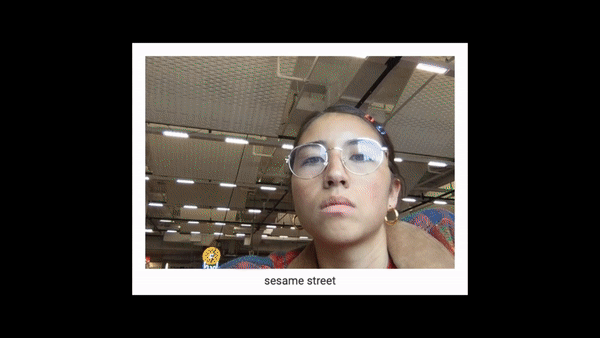
Glance Back also prompts a welcome reflection on seeing and being seen. We stare at our screens all day, retaining information and seeing updates, but when do they ever look back at us? When do we have the time to look at ourselves?
Maya Man writes:
“You know that feeling when someone is staring at you for a really long time? It’s super uncomfortable right? Especially if this gaze is unreciprocated. Glance Back recognizes this phenomenon that occurs between ourselves and our machines when we spend so much time looking at our screen.”
Having your photo taken abruptly and seeing your face look back at you provides a reminder of the self. You are taken out of the context of the activity you were currently engaged with and reminded of who you are beyond working and browsing—a human being existing in physical space outside of a glowing screen.
Ultimately, Glance Back is a tool to take advantage of the time that will inevitably pass, giving you an awareness of self and the real world context surrounding you.
Enjoy the work:
Glance Back by Maya Man
Maya Man is a New York City based artist, technologist, and dancer who creates work with code.
She holds a B.A. in Computer Science and a B.A. in Media Studies from Pomona College. Currently, she's building experiments at the Google Creative Lab after completing the Fiver residency program.
For Show and Tell, Special Special invites a selection of artists to produce or share work that can be viewed in the browser, downloaded, or streamed. The work is presented as a series of digital exhibitions periodically delivered to email inboxes.
Show and Tell 13:
Protest Tools for Anonymity

Cities across the United States and places beyond have come together to show solidarity in the protests for George Floyd and against racism and police brutality.
As social media and social justice converge at this time of action, you may find the resources in this Show and Tell helpful to maintain anonymity and protect protesters' identities when sharing images.
[[read-more]]
As you attend a vigil or protest, you may feel compelled to document it, whether to show solidarity or to show the real face of what’s happening. If you do share images, be mindful of those around you. To keep your friends safe, use these tools created by allies to blur faces and delete revealing data.
The first resource, Image Scrubber by Everest Pipkin effectively scrubs your photos of Exif metadata and blurs faces.
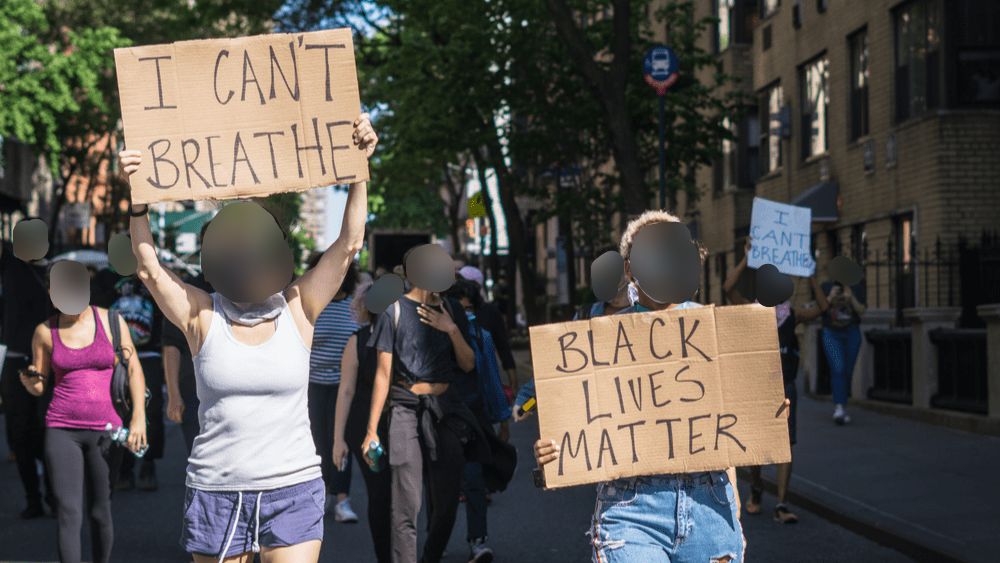 Steve Sanchez Photos / Shutterstock.com
Steve Sanchez Photos / Shutterstock.com
Metadata is information stored in images that show the location, time, and device on which the image was taken. This information can be used to tie you to a protest or a time past curfew. You can also use Image Scrubber to blur faces or paint over them for added security.
Image Scrubber can be accessed via your desktop computer or phone and used offline. According to Pipkin: “All processing happens directly in the browser—no information is stored or sent anywhere.”
This is an open resource project on Github, allowing for collaboration and improvement.
Pipkin has also compiled this useful list of resources for how to maintain your anonymity online and minimize your digital footprint.
Body Blur by Xach Branch is a face filter created for use on Instagram, a platform that has become a tool to share information and footage from the protests.
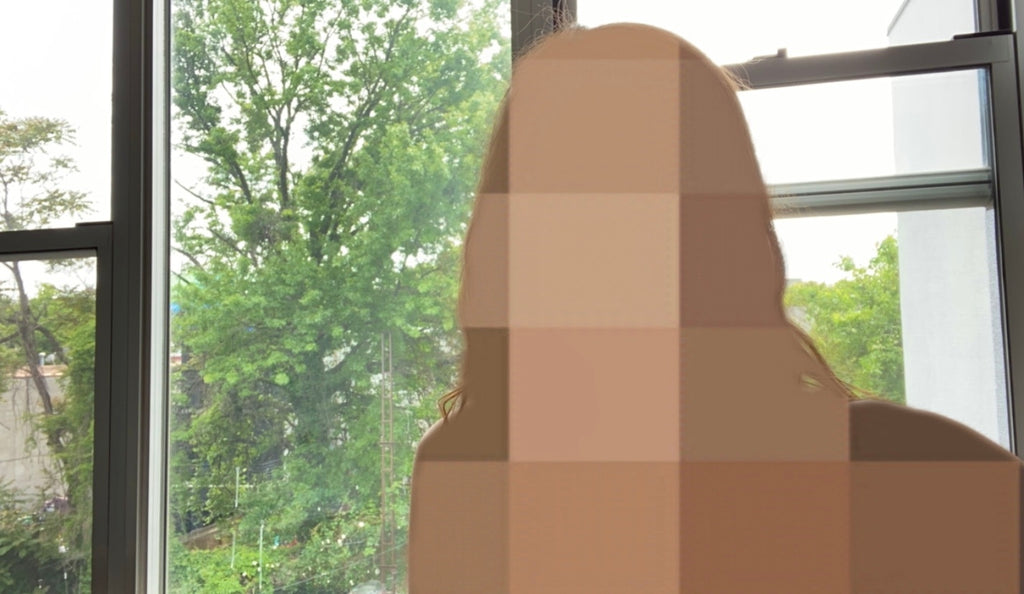
Body Blur blurs the body and face of everyone in frame and can be used on the front- and back facing camera of a phone, and Instagram Live. It does not remove metadata, but it comes with instructions on how to do so: by posting screenshots or screen recordings of the original footage.
Utilize these tools created by allies to stay safe. We at Special Special think they are strong examples of individuals using their specific skills to help.
At Special Special, we have compiled a list of resources to help, and to make change. Whether you are in a position to donate money or time, you can find organizations to interact with here: Anti-Racism Resources
Most of these resources were originally shared by our extended community, and we are grateful for all those who circulate information and resources. We will continue to update the list.
Black Lives Matter!
Stay safe.
Body Blur by Xach Branch
Anti-Racism Resources compiled by Special Special
Xach Branch is a filmmaker based in Northern New Mexico.
For Show and Tell, Special Special invites a selection of artists to produce or share work that can be viewed in the browser, downloaded, or streamed. The work is presented as a series of digital exhibitions periodically delivered to email inboxes.
Show and Tell: 12
A Ritual of Habits by Rosalie Yu

In a culture of individuality, sweet foods are often associated with indulgence, over-consumption, and by extension, loss of control. Sugar is perceived as an unnatural and excessive component to a healthy diet. Beyond its surface, the sweetness of sugar itself is imbued with specific power relations, as the origins of modern global trade are rooted in the colonial exchange of sugar as a commodity. Over time, colonized places would often form sentimental attachments and unconscious habits towards certain products. And it is Taiwan’s collective fondness for sweetness—there, the sugar industry was shaped by Dutch occupation and various regime changes—that Rosalie Yu examines in her project A Ritual of Habits (2017-18).
[[read-more]]

In this project, the artist uses 3D scanning to chronicle all the sweet foods she has consumed over the course of two years. A glistening egg tart, multi-colored macarons, or a nicely filled Bavarian cream donut, to name just a few, are captured in exquisite detail. A staggering total of 169 items have been meticulously catalogued and uploaded to an open-source platform.
They were subsequently placed in a virtual environment, which was used to create an accompanying 360 degree video that a user can freely explore. The video slowly reveals a banquet table lined with all manners of cakes and pastries, as well as walls decorated with the sweet trophies. Stripped of their enticing sheen by the method of capture, these sweet objects appear forlorn, dusty, and ghostly, as if awaiting an unveiling that never arrives.
 Veniero's cream pastry by Rosalie Yu on Sketchfab
Veniero's cream pastry by Rosalie Yu on Sketchfab
 Ziv's wedding by Rosalie Yu on Sketchfab
Ziv's wedding by Rosalie Yu on Sketchfab
Photogrammetry is an evolving technique that takes overlapping photographs of an object from multiple angles and combines them to construct a three-dimensional digital model. A software could take a pint of oreo ice cream and generate a ‘point cloud’ of spatial coordinates that would then be stitched together to create a complete capture of a scene. The application of such a repetitive as well as time and CPU intensive process to something as mundane as eating transforms the act of consumption into a self-aware, performative ritual, essentially turning ‘intake’ into an ‘output’ of elaborate steps.
As a result, Yu’s presentation resembles less the scare tactic employed by diet coaches in reality TV shows to demonstrate how much food a person has gone through in a prolonged period of time, than a deeply personal, therapeutic act that attempts to reconcile with her and her family’s complex relationship to sugary products.
Enjoy the work:
A Ritual of Habits - Project Page
A Ritual of Habits - 3D Collection
A Ritual of Habits - 360° Video
About the artist:
Rosalie’s practice explores concepts of reciprocity, participatory process, and embodied experience, often through emerging photographic techniques and immersive media.
Website: rosalieyu.com
Instagram: @rosalieyu
For Show and Tell, Special Special invites a selection of artists to produce or share work that can be viewed in the browser, downloaded, or streamed. The work is presented as a series of digital exhibitions periodically delivered to email inboxes.
Show and Tell: 11
The Museum of Generated Art by Michael Simpson

The Museum of Generated Art by Michael Simpson uses the format of a text-based game, where you, the visitor, can explore a space where endless paintings are generated from simple typed commands.
As you enter the museum, a small grey cat named Lily leaps off an alcove to reveal a note left for you to read. You are invited to step further into the Brutalist structure, which reveals painting after painting until you finally push your body through a small tunnel, to find out what lies in the darkness of the final room. Enhanced by glowing green text layered over a grey background, the atmosphere is one of excitement and mystery, reminiscent of a detective novel from your adolescence.
[[read-more]]

Representing something that actually exists is not a priority here; rather, The Museum of Generated Art functions as a springboard for the users to imagine the implied architecture in their own minds, which is perhaps the most important work of art being generated by entering the museum.
This is a welcome break in the time of social distancing as it pertains to the art world, when galleries and art spaces scramble to move their exhibitions online, striving for realism.
In The Museum of Generated Art, your art experience is pared down to commands and the engine that supports them. New artworks can be endlessly generated from the same input, and each user experiences the space differently because they imagine the surroundings based on their own personal references.

The idea of the museum goes all the way back to Simpson’s childhood, when his father encouraged him to mess around with the family collection of floppy disc games. Playing around with text-based games taught Simpson how to read and would greatly inform his future practice by awakening in him a sense of the computer as a magic portal, one that leads to infinite worlds beyond the screen.
The Museum of Generated Art is foremost an invitation to use your imagination. Special Special encourages you to step into this museum where no two paintings or visits will ever be alike.
Enjoy the work:
The Museum of Generated Art
Michael Simpson is an independent software developer, researcher, and media artist based in New York City. Michael’s research interests revolve around multi-sensory experience and how real-time computer graphics, sound analysis, and artificial intelligence can be combined to augment and enhance human experience. Michael is an alumni of the School For Poetic Computation and New York University’s Interactive Telecommunications Program where he currently serves as an adjunct professor.
Twitch: mgs_nyc
Website: mgs.nyc
Instagram: mgs.nyc
Soundcloud: mgs_nyc
For Show and Tell, Special Special invites a selection of artists to produce or share work that can be viewed in the browser, downloaded, or streamed. The work is presented as a series of digital exhibitions periodically delivered to email inboxes.
Show and Tell: 10
Cyber Sanctuaries by Specter

Step into the virtual spa that is Cyber Sanctuaries and leave your earthly stress behind.
Cyber Sanctuaries is a creation by Specter, a curatorial initiative by Agnes Momirski and Georgia Kareola. It is a virtual space to relax and recharge, made up of numerous rooms, with art created by multiple new media and soundscape artists, united here in the zeitgeist of self-care and the digital realm.
[[read-more]]
In the first room, Cleanse, you are met by a silver being swaying effortlessly in the waves of a turbulent, pixelated sea. They invite you to take solace in the virtual world, where access is 24/7 and the simulation is infinite.
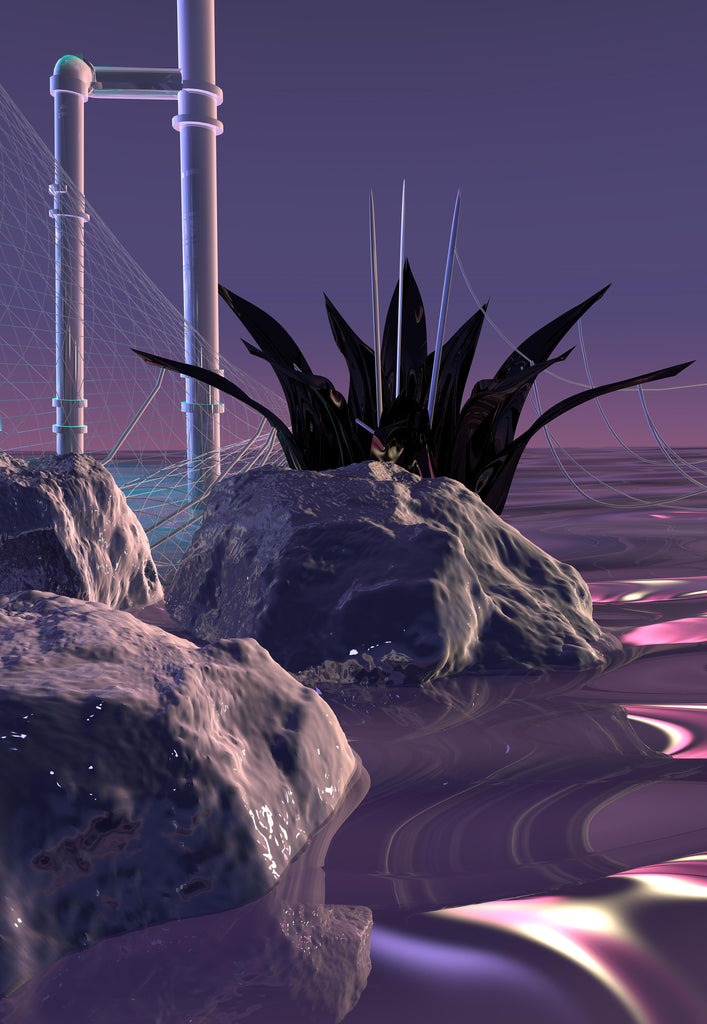 Part of RIFT by Kerrie IRL in Be Abundant
Part of RIFT by Kerrie IRL in Be Abundant
You can then proceed to move through other rooms with names such as Expand, Be Weighless, and Synchronize. Each room offers a meditative reset of the senses. It might seem contradictory to use a virtual space to cleanse the mind, as technology seems to be the scapegoat for worldwide collective stress. However, in room 11, Integrate, the non-judgmental meditation Smartphone Cleanse 101 by Jasper Griepink counters this sentiment by encouraging users to reflect on their cell-phone habits and how these feed into the greater human consciousness.
In other rooms, you can fall into infinite visual patterns or float weightlessly as a monotonous text-to-speech reader reflects on the socio-political landscape of today and how to navigate it.
The variety of works in Cyber Sanctuaries offers both social commentary and meditation - upon closing the browser your mind will be refreshed in several ways.
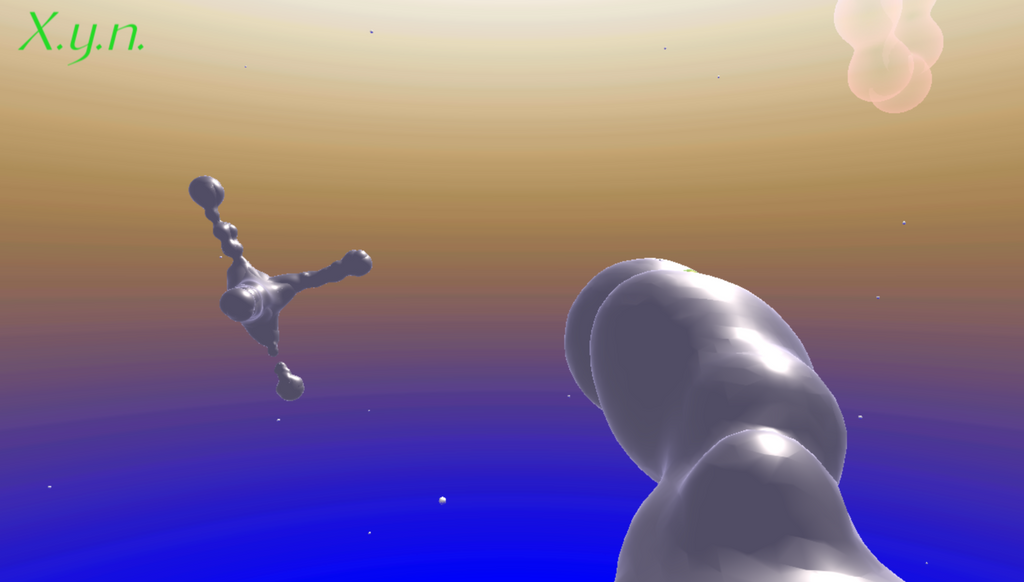 Screengrab of 'A Motion for X.y.n.ing' by Kumbirai Makumbe in Be Weightless
Screengrab of 'A Motion for X.y.n.ing' by Kumbirai Makumbe in Be Weightless
Cyber Sanctuaries is Specter’s pavilion at The Wrong Biennale, a global initiative to promote digital culture. The pavilion has now been extended to allow the public to enjoy the work for longer in the midst of the global pandemic. We encourage Special Special's audience to enter the sanctuary and, in the words of Specter, let it “digitally retreat, replenish and rejuvenate you.”
Cyber Sanctuaries features work by artists George Jasper Stone & Suzannah Pettigrew & cktrl, Kumbirai Makumbe, Fahmi Mursyid, Pinar & Viola, Sofia Crespo, Keiken, Jasper Griepink, Weixin Quek Chong, Kerrie IRL, Noviki , Valdas, Neurovirtual and Semiosphera
Enjoy the work:
Cyber Sanctuaries
About Specter:
Specter was initiated by Agnes Momirski and Georgia Kareola - two Mercurial minds - a Gemini with a Cancer heart, and a Cancer with Gemini mind. They share empathic souls (Pisces moons) and quick minds (Gemini rising at 11 and 5 degrees). Their natal Mercury (at 25 and 23 degrees Gemini) naturally conspires with their future-minded Aquarius MC (at 12 and 1 degree). These two wordsmiths enjoy drinking espressos, and exploring altered states of mind, futuristic visions, and personal alchemies.
Website: https://specter.world/
Instagram: @specter.world
For Show and Tell, Special Special invites a selection of artists to produce or share work that can be viewed in the browser, downloaded, or streamed. The work is presented as a series of digital exhibitions periodically delivered to email inboxes.
Show and Tell: 09
Flat Fix Files by Helen Galioto

Flat Fix Files is a monthly PDF file project by Helen Galioto.
Helen compiles new and archival photos she has taken into PDF-form and distributes them via email on the 12th of every month.
The PDFs are thematic and poetic, at times accompanied by text and found files such as writing excerpts and articles.
[[read-more]]
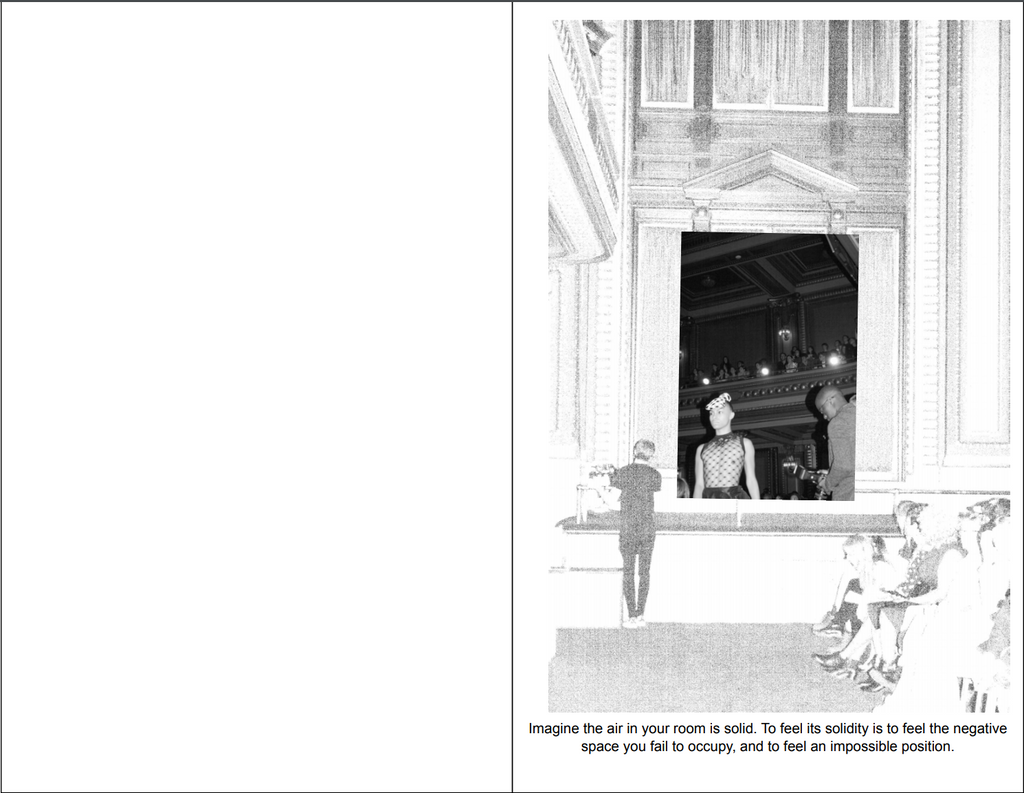
For this Show and Tell, Special Special is highlighting PDF 20200312 (The Complete Handbook of Perpetual Labour With Recent Photos).
This edition of Flat Fix Files documents a fashion show, moving through monochrome images that alternate between rushed models and a transfixed audience, supplemented by text written by Galioto that enhances the solemn and stoic feeling of the images.

Earlier Flat Fix Files are available to view on Helen’s website. They are thematically different, but consistent in the use of ironic humor found on signs and pamphlets juxtaposed with austere, ominous undertones.
To enjoy the work:
View 20200312.
Sign up here to receive monthly Flat Fix Files. The next one is due to be sent out 04/12.
Helen Galioto is a photo artist and dog walker living and working in the Bronx, NY.
Website: helengalioto.com
Instagram: @bayridgehonda
For Show and Tell, Special Special invites a selection of artists to produce or share work that can be viewed in the browser, downloaded, or streamed. The work is presented as a series of digital exhibitions periodically delivered to email inboxes.
Show and Tell: 08
Something to Hold by Alison Roberts

Social distancing is a communal act of solidarity and care, but it can be dull, disheartening, and lonely. Something to Hold is Alison Robert’s way of helping in this time of isolation.
In this participatory project, Alison sends out postcards with recommendations for a film, poem, and book to enjoy while indoors.
[[read-more]]
If you would like to receive one of Alison’s postcards with three unique recommendations, please send in your mailing address here by April 6th, 2020 - the postcards will ship worldwide. The first 15 to send in their address will receive a card.

For the greater Special Special community, Alison has shared these tips to aid and soothe during gloomy nights inside:
Movie—“Atlantics,” Mati Diop
Book—“Death on the Installment Plan,” Louis-Ferdinand Céline
Poem—“Distance,” Dorothy Parker
While many of us stay in touch with coworkers, friends, and family, strictly screen-based communication can feel insufficient. There is value and warmth in being able to hold something in your hand that shows someone cares for you.
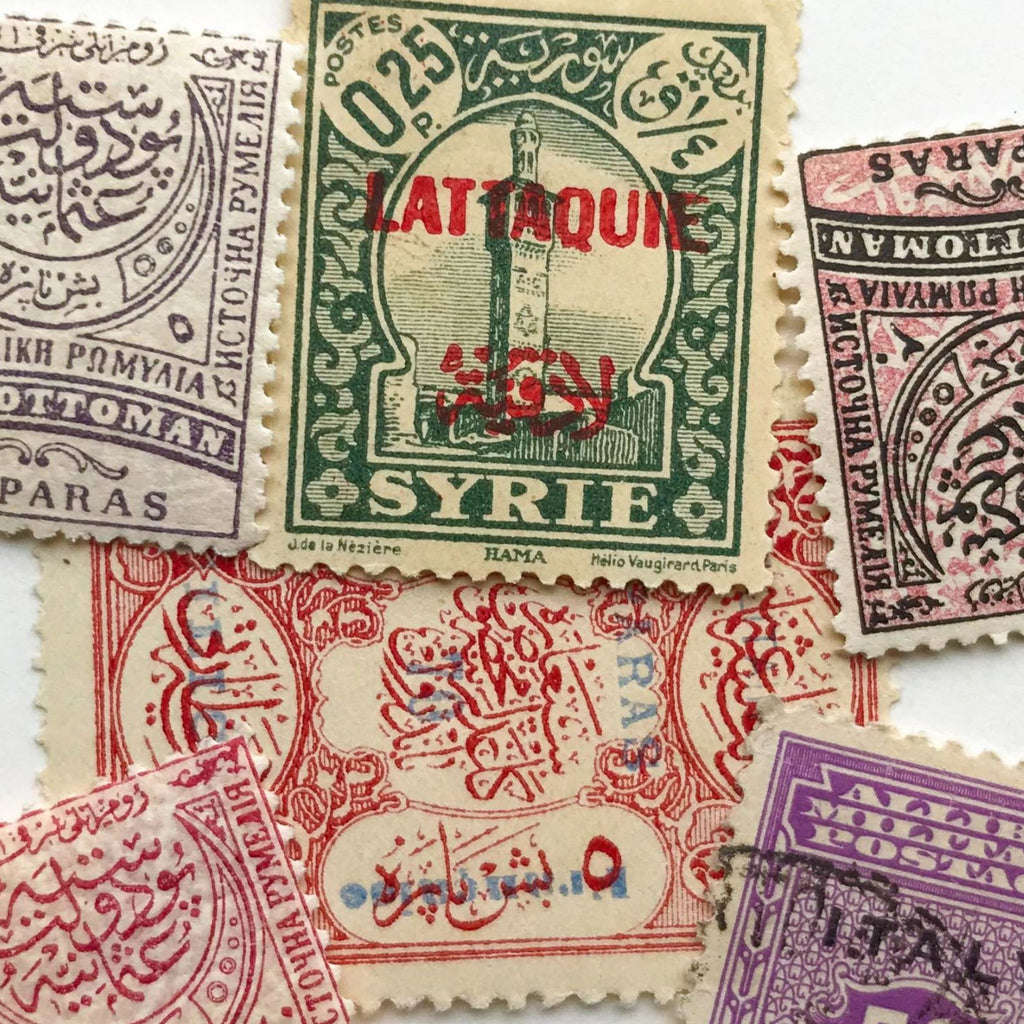
A note from Alison:
“I have a close friend with whom I only write letters. It began when she first left New York, and since then, every WhatsApp has paled in comparison. If you’re able to, I hope you’re making the most of your quarantine. If not, send me your address, and I'll send you a postcard with a book, movie, and poem recommendation.”
Alison Roberts is a Ridgewood, Queens-based communications manager. She has held positions at MoMA PS1, The Armory Show, Phaidon Press, and Mana Contemporary. She loves New York, going to the movies, and finding abandoned books on the street.
Follow Alison on Instagram for more content.
For Show and Tell, Special Special invites a selection of artists to produce or share work that can be viewed in the browser, downloaded, or streamed. The work is presented as a series of digital exhibitions periodically delivered to email inboxes.
Show and Tell: 07
CHKRA by Tsung

The seven sound meditations of CHKRA - the world’s first couture sound spa, are available at your convenience here on Spotify.
Let the seven tracks balance your chakras, while you simultaneously absorb the energy of high-end fashion.
[[read-more]]
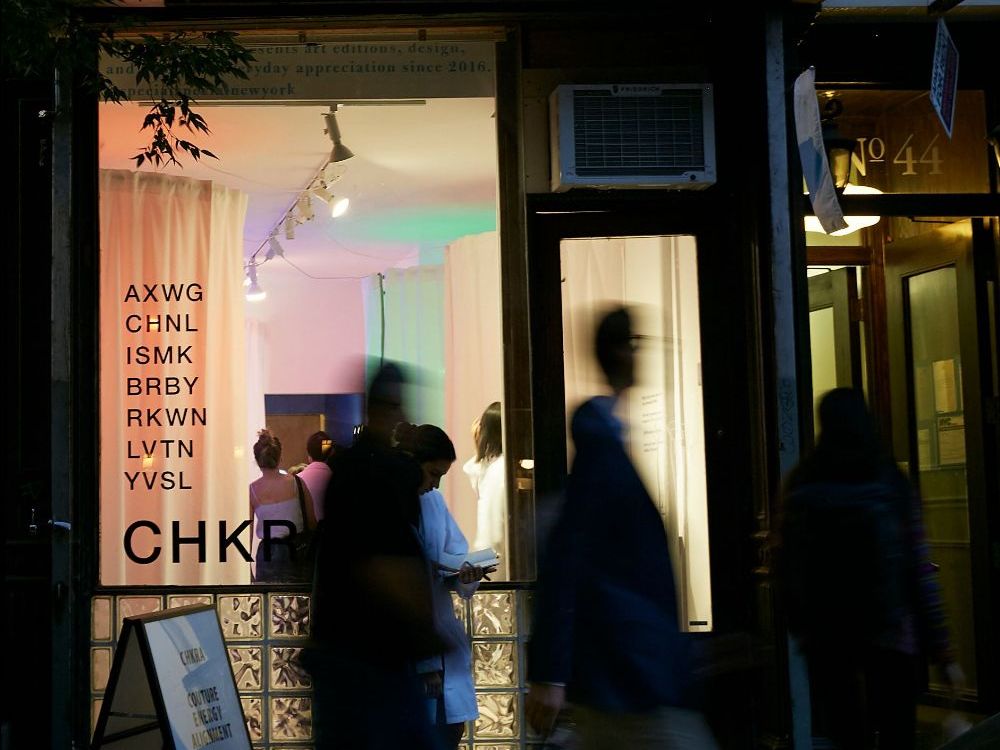
CHKRA was a collaboration between Special Special and sound artist Tsung. Tsung set out to release the energy of fashion to the masses, making it accessible and less wasteful.
Tsung collected field recordings of seven high-end flagship stores, amassed ambient noise and carefully edited the sounds to represent the essence of each brand: AXWG, ISMK, RKWN, LVTN, CHNL, YVSL, and BRBY. Tsung then matched these essences to the frequencies of the seven chakras in the body - from the grounded, stable root chakra to the soaring crown chakra.
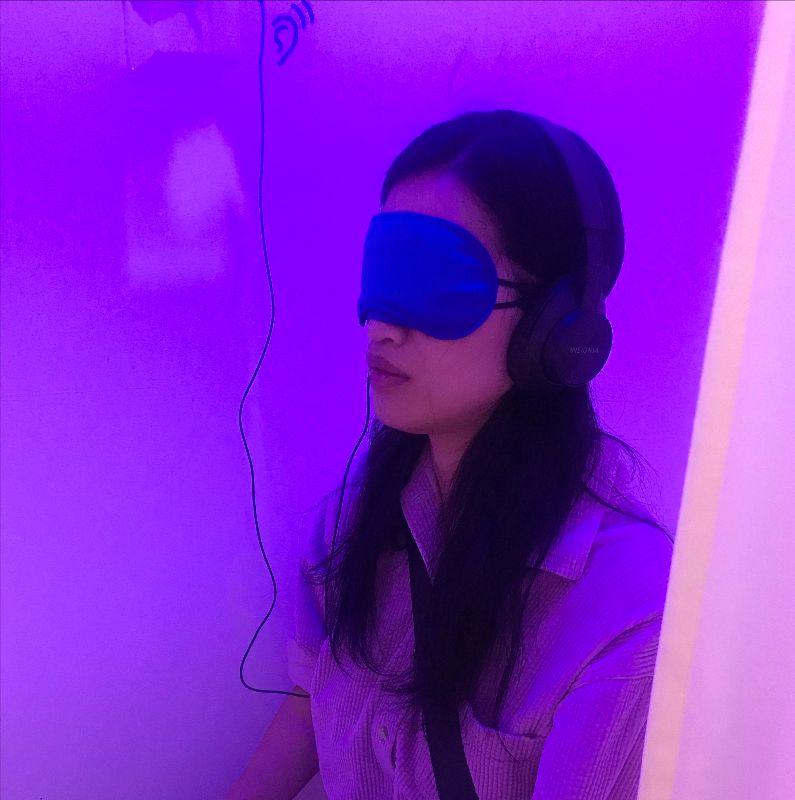
CHKRA sound spa was first presented at Special Special in the fall of 2019. Interview Magazine called CHKRA "an experience where guests are invited to “relax and heal.”
Wherever you are, let CHKRA balance you, while experiencing the power of branding without waste or consumption.
To enjoy the work:
Listen on Spotify here.
Tsung is the solo project name for John Chao. In his solo work, John has written for dance, film, and electronic performance. As a practicing Buddhist, his projects as Tsung have a particular focus on traditions of spiritual music. He has a background in classical, electronic, and experimental music. John is also part of the collective Misha, signed to Tomlab Records (The Books, Xiu Xiu). He is based in New York City.
For Show and Tell, Special Special invites a selection of artists to produce or share work that can be viewed in the browser, downloaded, or streamed. The work is presented as a series of digital exhibitions periodically delivered to email inboxes.
Show and Tell: 06
718-554-3854 by James Chrzan

If you are staying inside, urging to move far but can’t, step into an auditory landscape created by James Chrzan instead.
Chrzan’s project 718-554-3854, as its title suggests, invites the audience to dial a phone number. On the receiving end you will hear an elusive voice telling you that any of the rooms you are about to enter could be at the center of the world. Press any key to move further into Chrzan's creation.
[[read-more]]
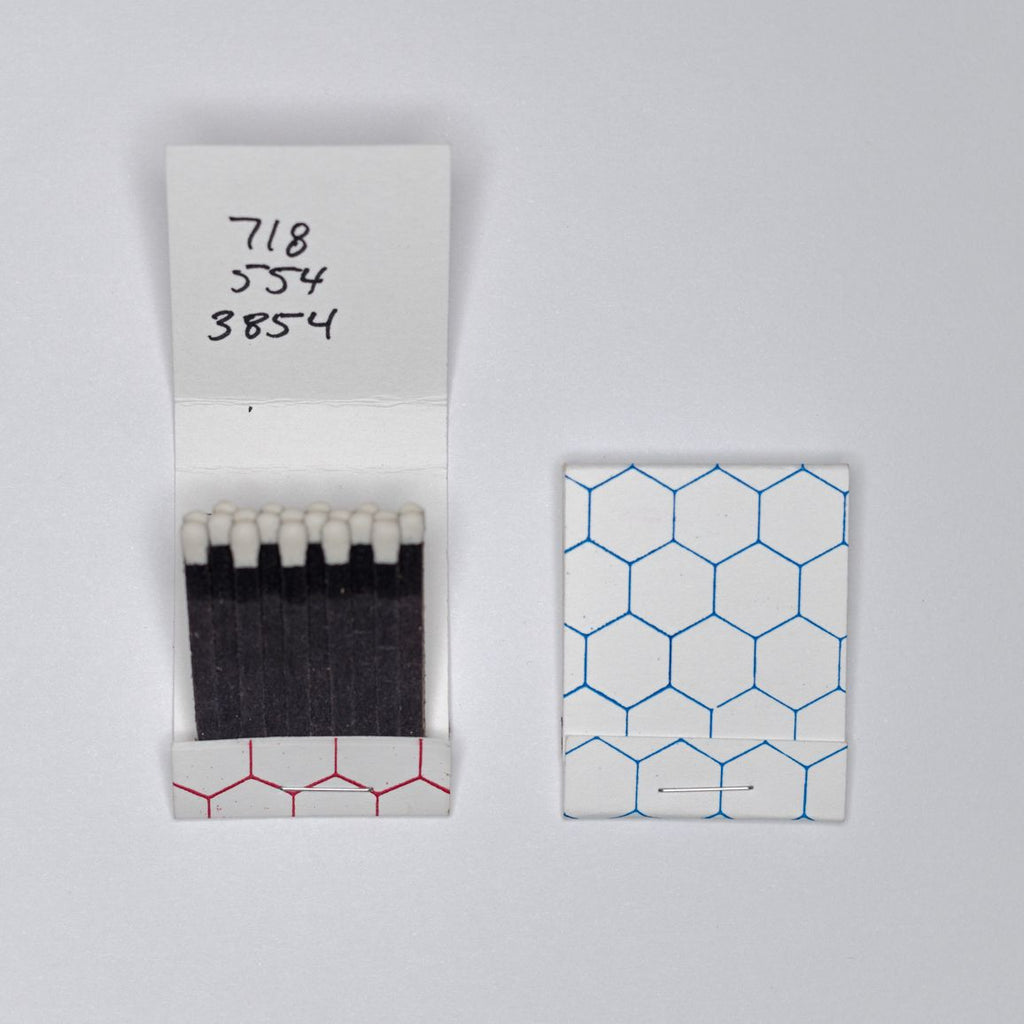
You may find yourself reaching out to touch the walls of a stucco house, or in the moment of confusion right before you reach to turn on your bedside lamp in the dark.
In 718-554-3854, moments are portrayed as space, and any space you find yourself in exists only on the other end of the dial tone.
To enjoy the work:
Dial 718-554-3854.
James Chrzan is an artist, writer, and musician based in Ridgewood, NY. His work engages in the long tradition of the dematerialized art object. He founded the Ridgewood Community Seed Vault in 2019 and curates the non-corporeal fine art gallery Famous Chimps. A collection of new poems, Nice Job Haunting Me, was published by Puppy American in 2019. Narcissus pseudonarcissus, an opera in two acts written with Rachel Hillery, will premiere in 2020. He plays drums in the band Julep Maisey and releases music under the name My Life as a Kinetic Sculpture.
Follow James on Instagram for more content.
For Show and Tell, Special Special invites a selection of artists to produce or share work that can be viewed in the browser, downloaded, or streamed. The work is presented as a series of digital exhibitions periodically delivered to email inboxes.
Show and Tell: 05
Sandspiel by Max Bittker

This month’s Show and Tell highlights Sandspiel, a web-based falling sand game created by Max Bittker. In Sandspiel, different organic elements interact as they would in the real world, and you can examine what happens when putting lava on ice, or blowing wind on oil.
[[read-more]]
With Sandspiel you have full power over fire, water, fungus, wind, sand, and seeds. Use this omnipotence to layer the elements and create your own drawing that can be saved to Sandspiel’s online gallery.

Especially for this Show and Tell we created the hashtag #specialspecial with Max Bittker. By searching this in Sandspiel’s gallery, you can find art made by the extended Special Special community, and add to it yourself! Hurry to the sandbox!
You can also follow Sandspiel on Twitter for more art and updates.
Bittker was inspired to create Sandspiel from dan-ball.jp's Powder Game, which he played growing up.
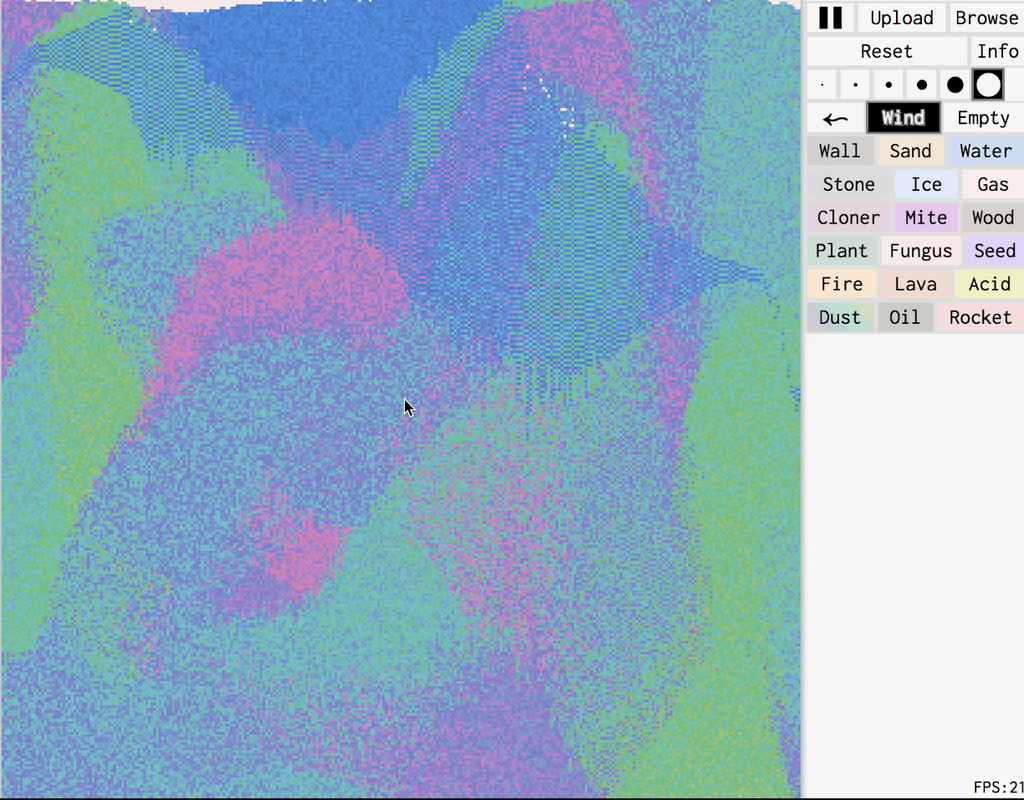
Enjoy the work:
Sandspiel
Max Bittker is a computer artist building tools for play, creativity, & communication.
Follow Max on:
Instagram
GitHub
Goodreads
For Show and Tell, Special Special invites a selection of artists to produce or share work that can be viewed in the browser, downloaded, or streamed. The work is presented as a series of digital exhibitions periodically delivered to email inboxes.
Show and Tell: 04
Nature Documentaries and Matrix Soundtrack by Studio Pointer
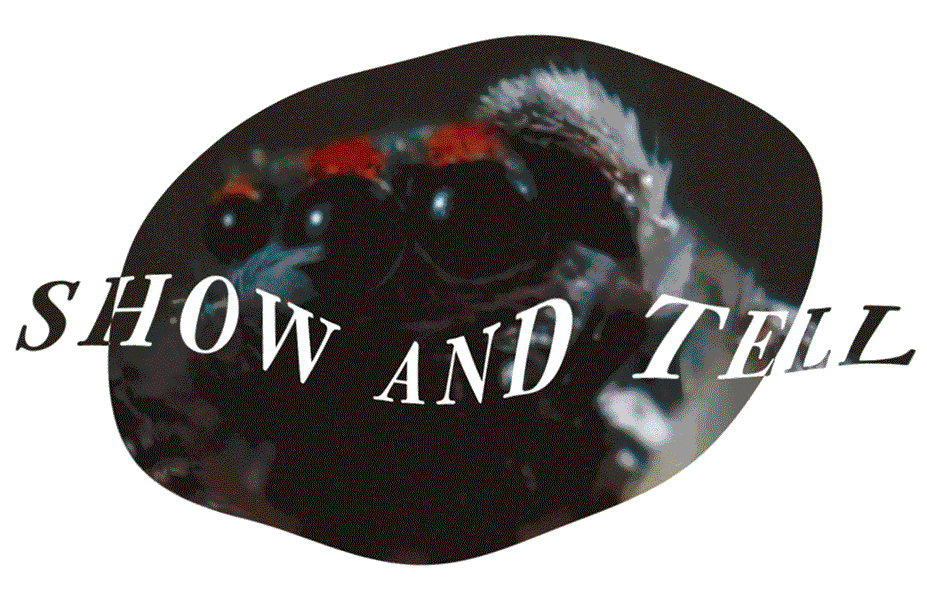
Studio Pointer, a cross-disciplinary collaboration between Aysa Sukhorukova and Jakob Schlötter, has created a video and audio generator that questions our perception of reality.
Visit Nature Documentaries and Matrix Soundtrack and you are met with a generator that randomizes a combination of nature footage and parts of the Matrix (1999) soundtrack, there for you to refresh endlessly. Each reloaded page presents a new combination.
[[read-more]]

The purpose of nature footage is to show us the world in a pure form, the wild and animalistic mind contrasting the subjugated state of humans. However, this footage is usually edited together from days of filming wildlife in close range of a video crew, often dramatized for us to empathize and project our human feelings onto the natural world.
As the Nature Documentaries and Matrix Soundtrack generator puts music to the movements of an animal, the mind connects the two and somehow the randomized combination makes sense. It’s the same concept as setting the soundtrack to your life by listening to music on the subway. We can create our own world by combining sensory impressions and have our brain make sense of them.
We recommend you to check out Nature Documentaries and Matrix Soundtrack, to refresh the page and let your mind and past experiences combine the music and footage into a narrative and simulated reality, brand new every time with the click of a button.
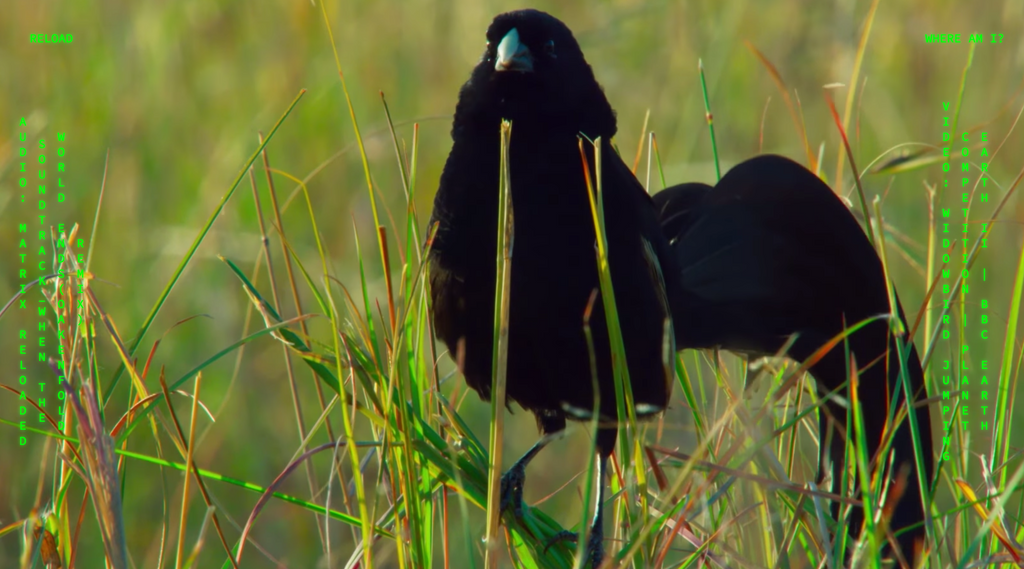
Studio Pointer is a cross-disciplinary design studio by Asya Sukhorukova and Jakob Schlötter.
Statement: We focus on research and development of interactions: existing and potential places of contact between user and content. As much as we like digital media, we are also interested in user experiences of the real world. They can be driven by print, object or spoken word. Our expertise ranges from image to sound design, from websites and archives to spatial installations.
Enjoy the work:
Nature Documentaries and Matrix Soundtrack
Contact:
Studio Pointer
studio@pointer.click
+31 (0) 6 12 92 11 58
Arena
Instagram
Facebook
For Show and Tell, Special Special invites a selection of artists to produce or share work that can be viewed in the browser, downloaded, or streamed. The work is presented as a series of digital exhibitions periodically delivered to email inboxes.
Show and Tell: 03
Flight Simulator by Laurel Schwulst

Opening Laurel Schwulst’s app Flight Simulator is like sinking into a damp cloud. The app replicates the cushioned space for reflection that is flight travel. An endangered, dream-like space where wifi signals and notifications cannot reach. As you start Flight Simulator, you are asked to choose an airport to depart from. You are shown the flights leaving at the moment, but to take off, you must disable your phone’s wifi, and put it in flight mode.
[[read-more]]
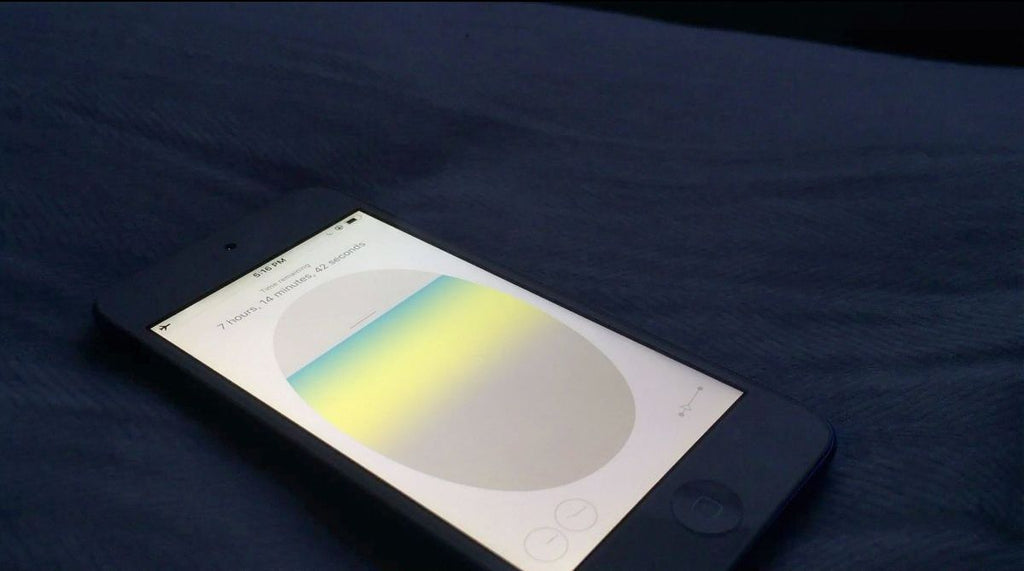
Flight Simulator is a mobile application for iOs and Android. As an ode to airplane mode, it celebrates the best part of air travel: peaceful solitude.
For the duration of a trip — 7 hours to Charles De Gaulle from JFK, 4 hours to LAX, your phone’s screen turns into an airplane window gradine of clouds, sun, and sky. You got the window seat! And if you try to cheat, and connect to the wifi, shame on you — your flight will turn around.
The app was published by Soft and includes algorithmic artwork by Aarati Akkapeddi. For every airport you successfully land at, without breaking your attention span, you receive a virtual pin designed based on the climate, altitude, and time zone of the destination.
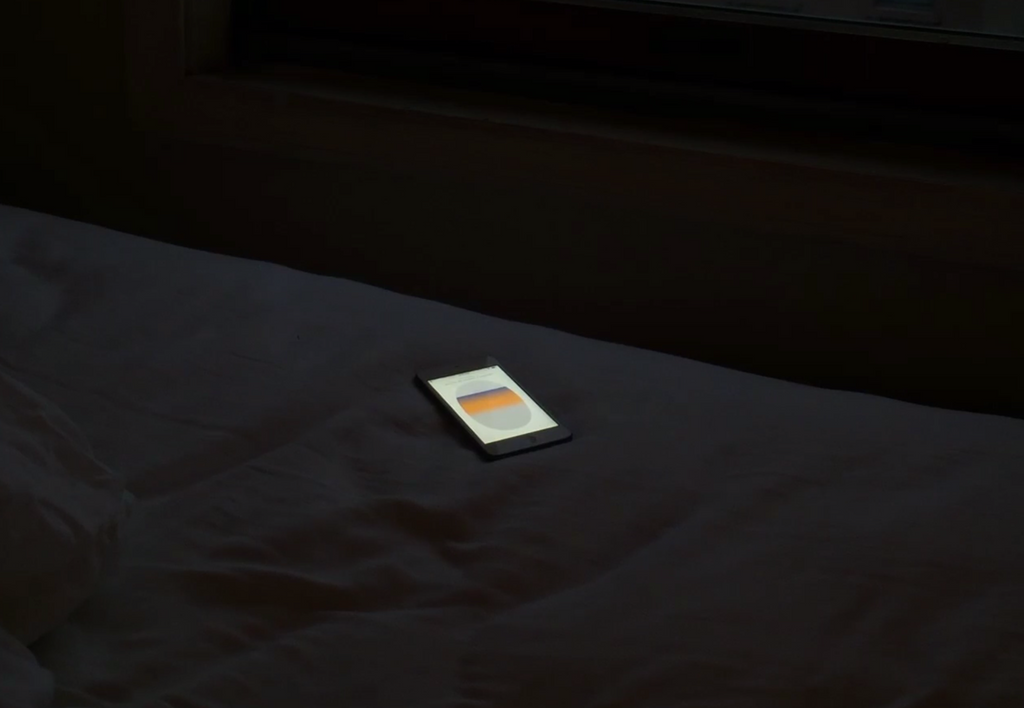
Soft and Schwulst are releasing a poster of all the collectible pins, available for download through purchase at Left Gallery, Berlin.
Our Special Special test scout took a flight to her favorite place in the world and watched dusk settle outside the airplane window. It even started raining! And productivity did improve, but most notably, every time they reached for their phone, they remembered they were actually in the air on the way to SBP, San Luis Obispo Regional Airport, and all notifications could wait for later.
Enjoy the work:
Hurry up and catch your flight for only $2 at: https://flightsimulator.soft.works/ or via your app store.
Laurel Schwulst is a designer, writer, and webmaster. She is interested in ambient forms of design and literature, public works, and the poetic potential of the web.
Site:
http://laurelschwulst.com
Social links:
Are.na
Instagram
Github
Twitter
For Show and Tell, Special Special invites a selection of artists to produce or share work that can be viewed in the browser, downloaded, or streamed. The work is presented as a series of digital exhibitions periodically delivered to email inboxes.
Show and Tell: 02
A Year On Earth by Del Hardin Hoyle & Samuel Bellingham

Special Special presents A Year On Earth, an episodic audio-visual project by Del Hardin Hoyle and Samuel Bellingham. The project first began in the spring of 2018, and each episode draws upon mixed media from a single year in time. The audio consists of music, sound recordings, movie clips, commercials, tv spots, and more from around the world.
[[read-more]]
Each episode features album art depicting a cartographic, astronomical phenomena, or development from the year of focus. For the first time, Hardin Hoyle and Bellingham release illustrated track listings for three episodes as part of their collaboration with Special Special, on view below. The typography used in the listings were also designed in the featured year.
Hardin Hoyle and Bellingham share an avid curiosity for sound and music. They are interested in the cultural and technological developments that are continuously impacting the aesthetics and possibilities of all music and sound from its conception, to recording, distribution, and final consumption.
They have always shared a constant stream of music with one another—recent discoveries, new releases, and old forgotten favorites. It has been a basis of their friendship since meeting in 2015.
A Year on Earth is a means to concentrate their energy within specific time frames: developing collections of source material that they chop, copy, paste, loop, overlap, and play out. The episodes are eclectic.
A Year On Earth has been featured on both 8ball Community Radio and Montez Press Radio, and can be streamed through the 8ball Mixcloud channel. The show is made in the artists’ studios in Bed-Stuy and Harlem.
For Show and Tell, Special Special invites a selection of artists to produce or share work that can be viewed in the browser, downloaded, or streamed. The work is presented as a series of digital exhibitions periodically delivered to email inboxes.
Show and Tell: 01
NOT on the Streets App by Jenny Lai
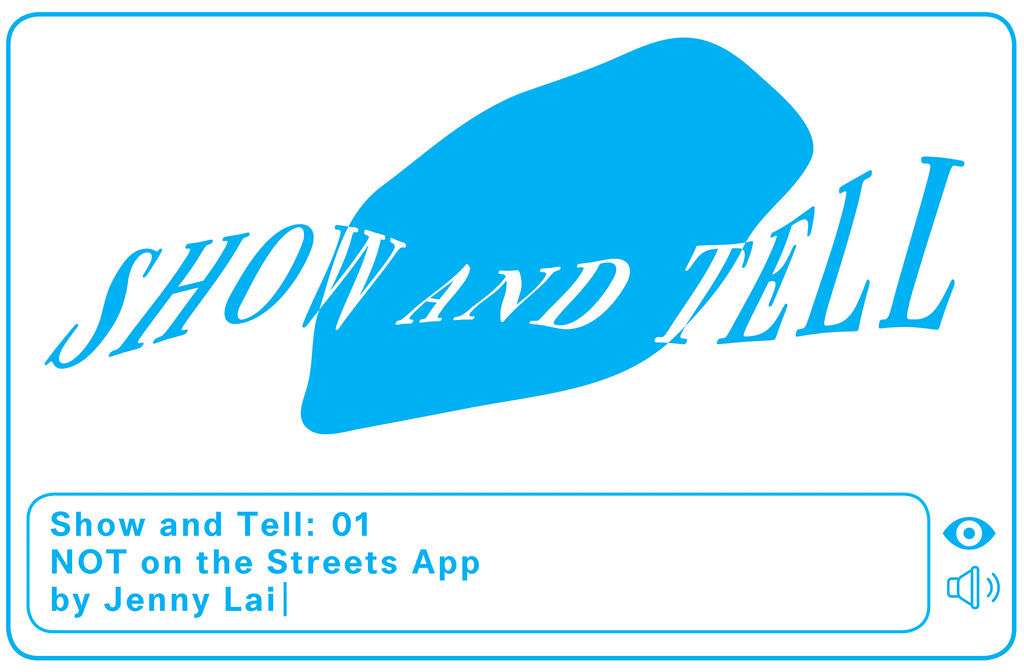
Fashion Week may be over, but you can make every week fashion week with the mobile app #notonthestreets. Jenny created this app as a playful way to hack the clothing of strangers on the street and dress them in her brand, NOT. Garments are presented in active poses with the figure subtracted and can be layered live in the camera capture mode. The garments are translucent in order to allow the layers below to be seen. The app can be downloaded for free and pictures are aggregated with the hashtag #notonthestreets. For this first issue, head to the app's Instagram to see photos created by Special Special team members!
[[read-more]]
Jenny Lai is a graduate of Rhode Island School of Design and has worked as a designer around the world from Amsterdam to Mexico City to South Africa with internationally renowned fashion brands such as Viktor & Rolf, Boudicca, Bibhu Mohapatra, and Carla Fernandez. She started her own New York-based clothing brand, NOT, to experiment with the physical processes of dressing in order to make dressing a surprising, playful, and transformative experience within itself.
Enjoy the work:
@notonthestreets_app
Contact:
info@notaligne.com
https://www.notaligne.com/
@not_aligne
For Show and Tell, Special Special invites a selection of artists to produce or share work that can be viewed in the browser, downloaded, or streamed. The work is presented as a series of digital exhibitions periodically delivered to email inboxes.


